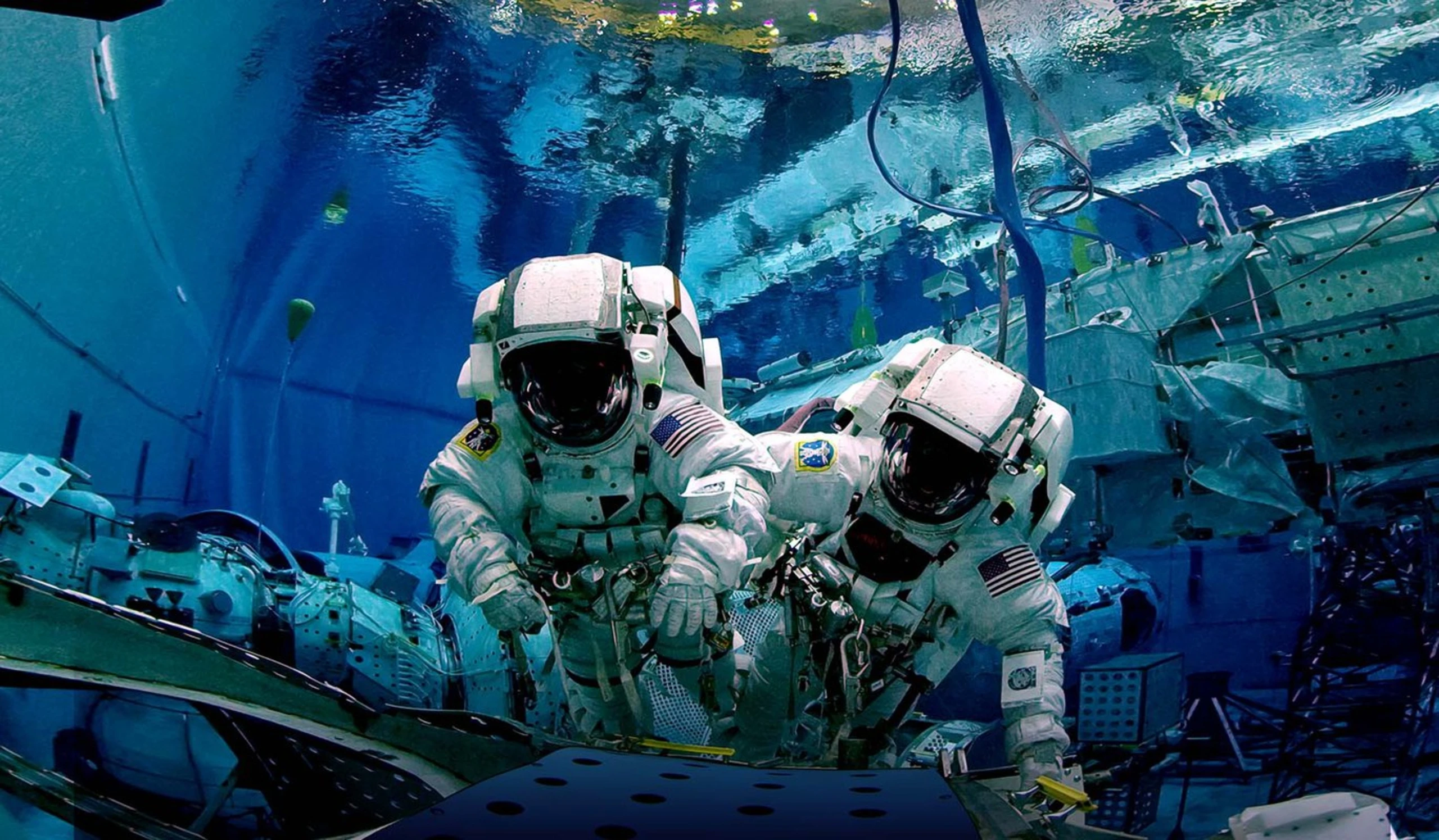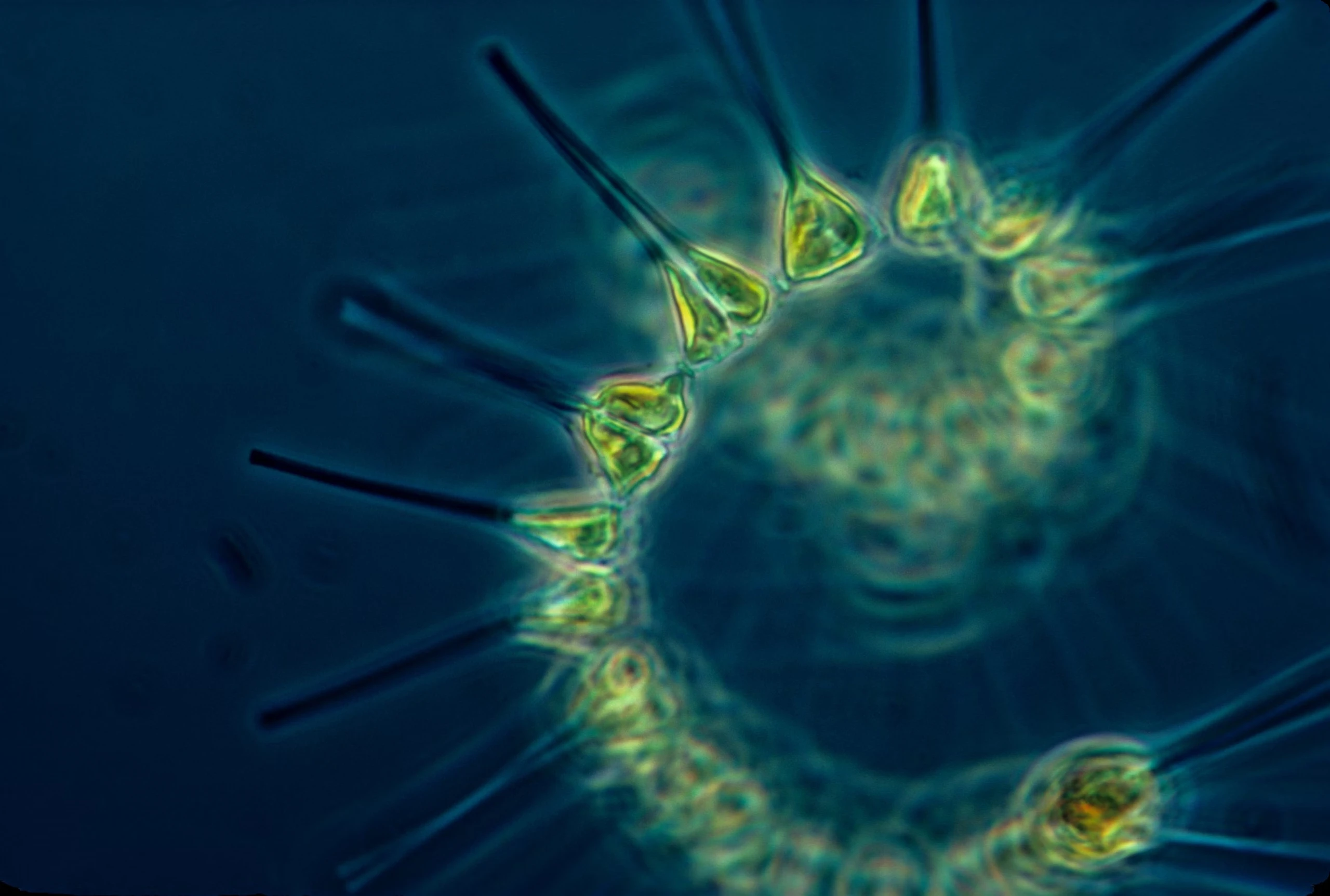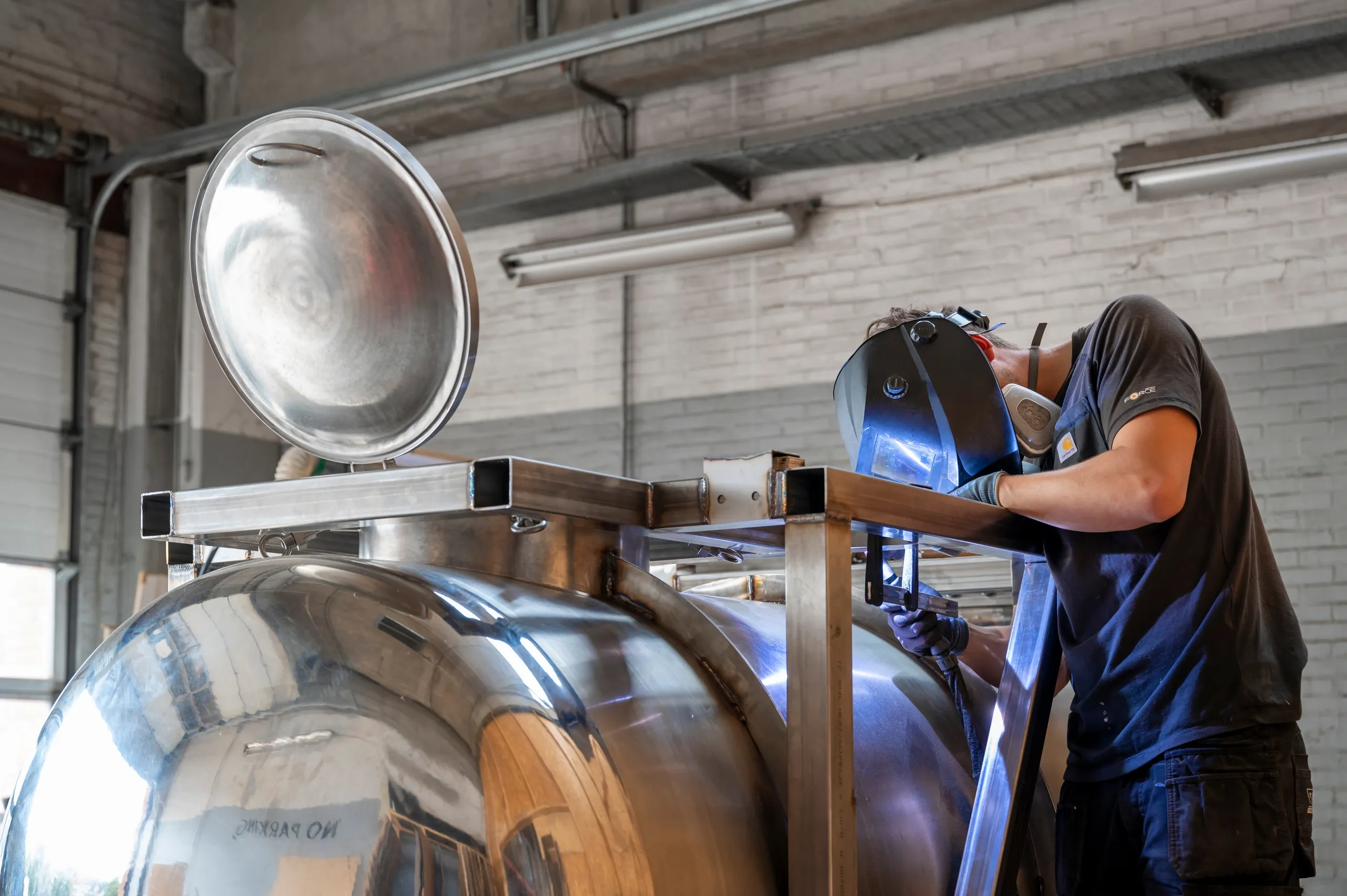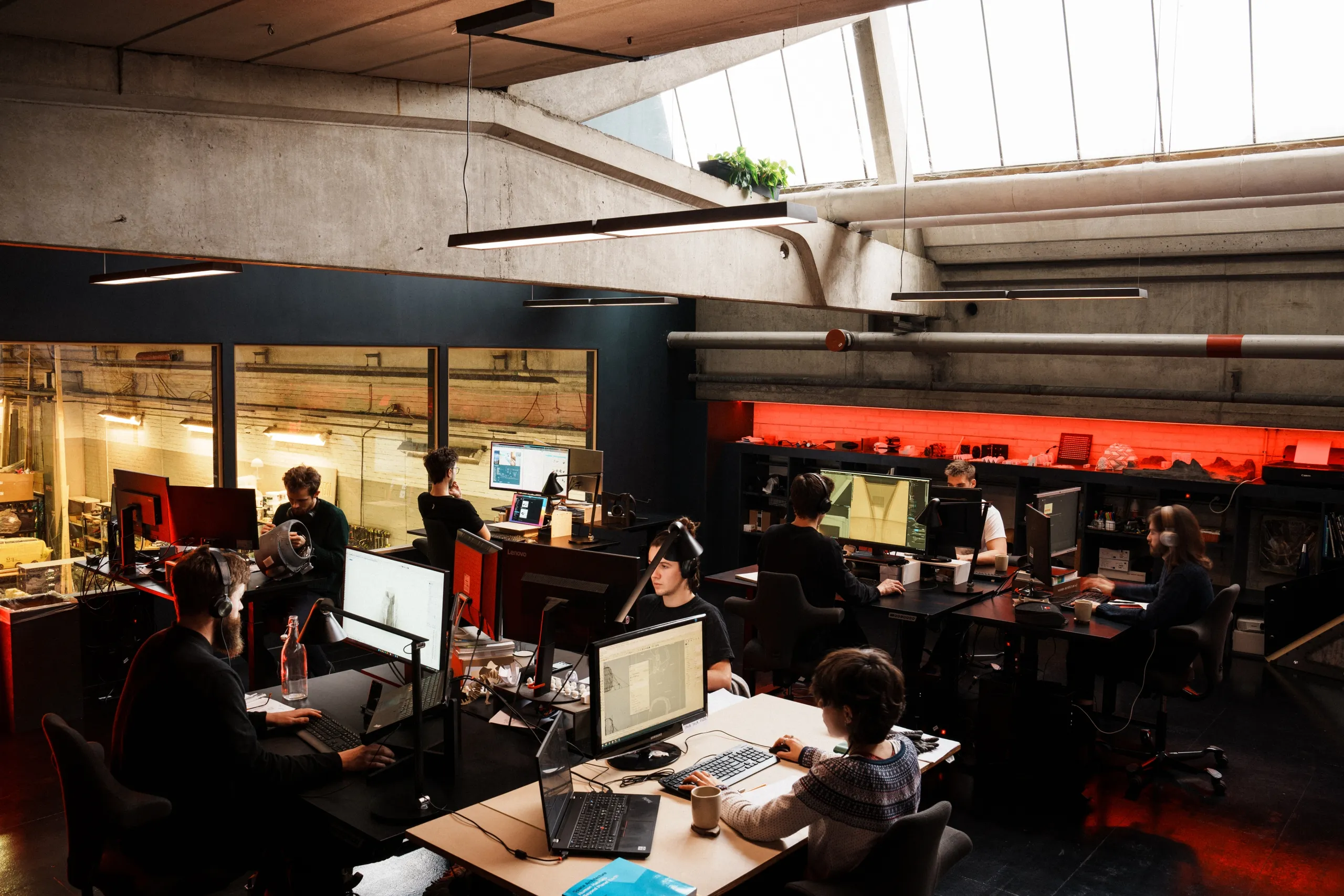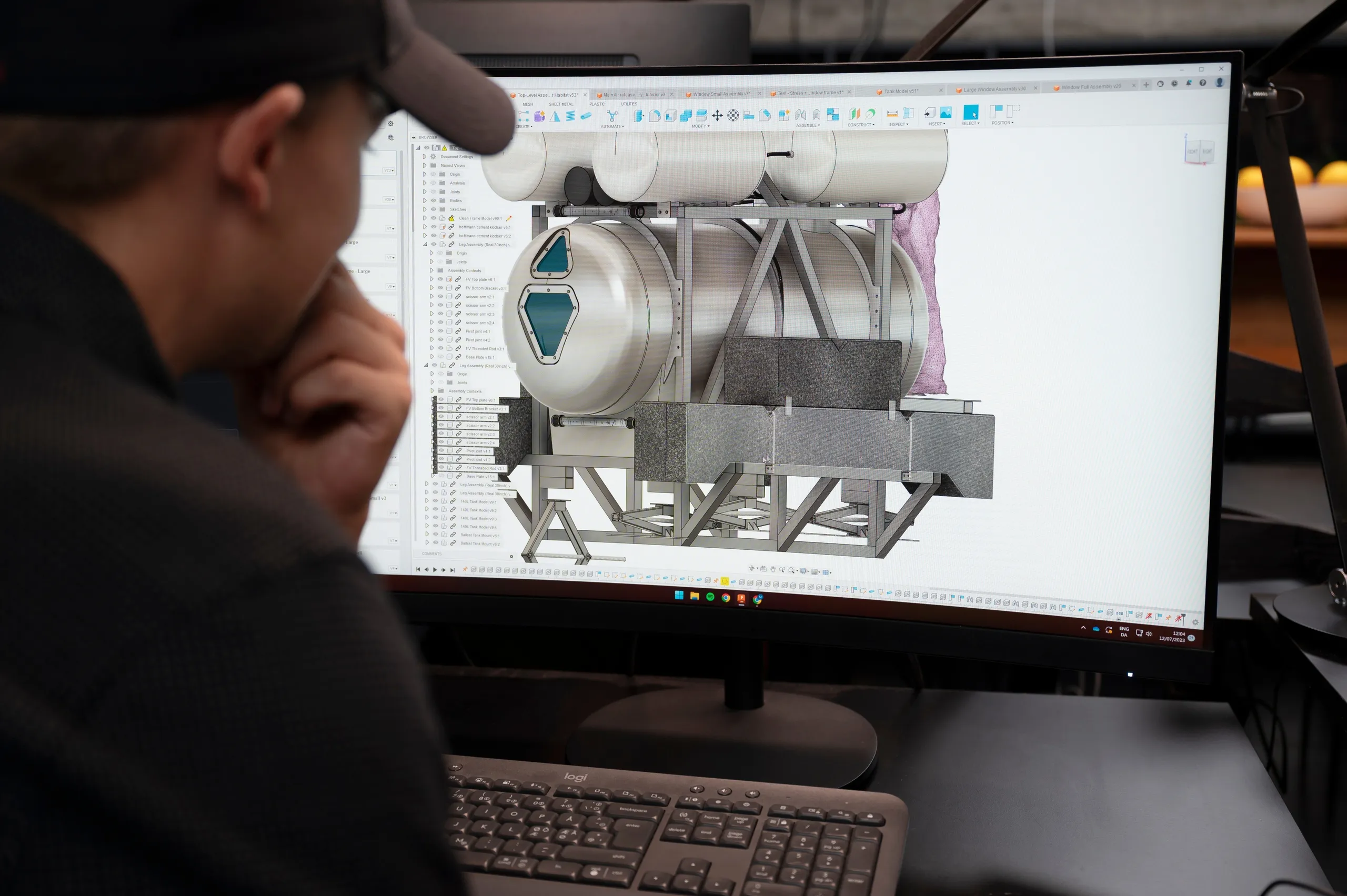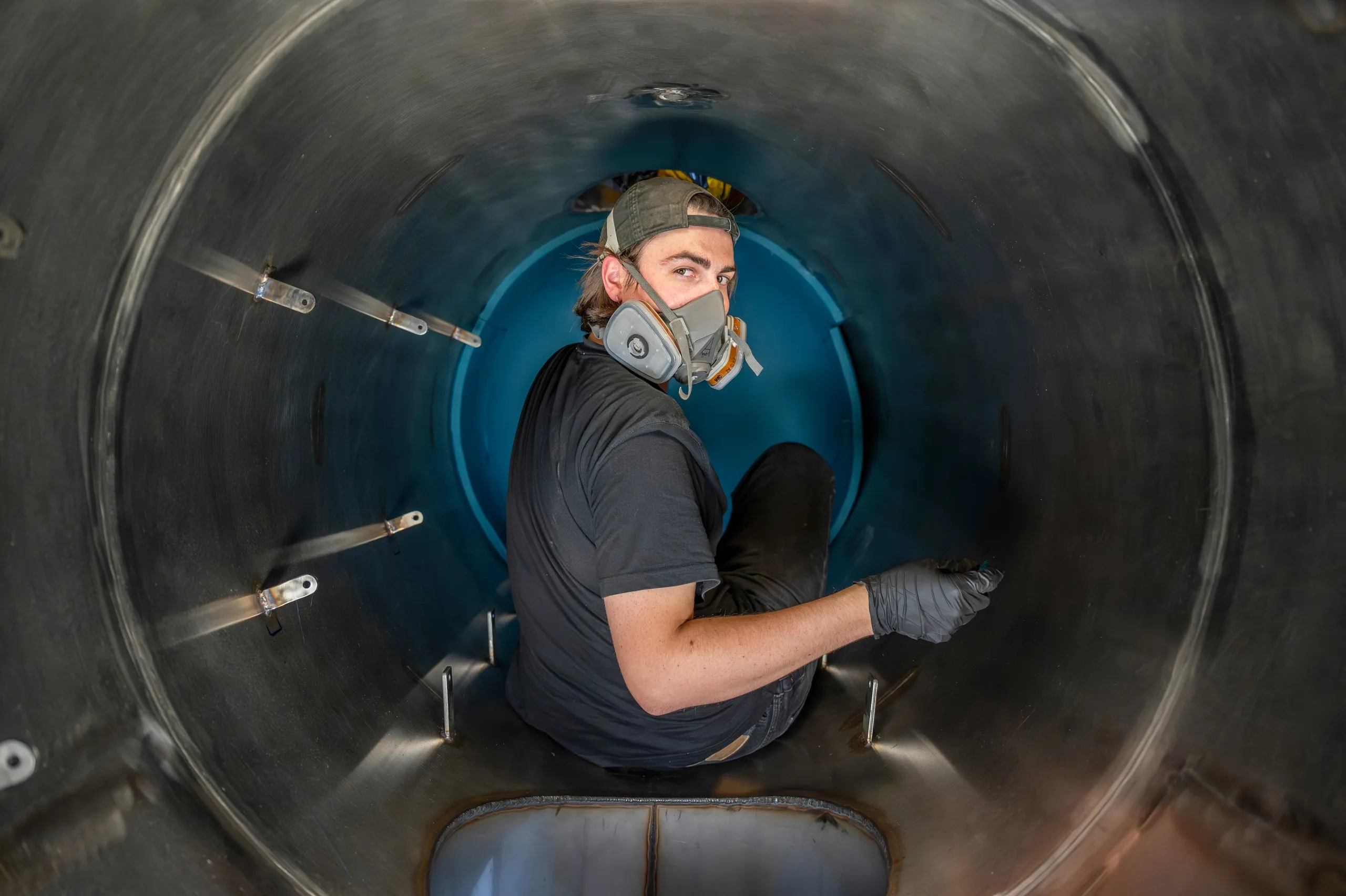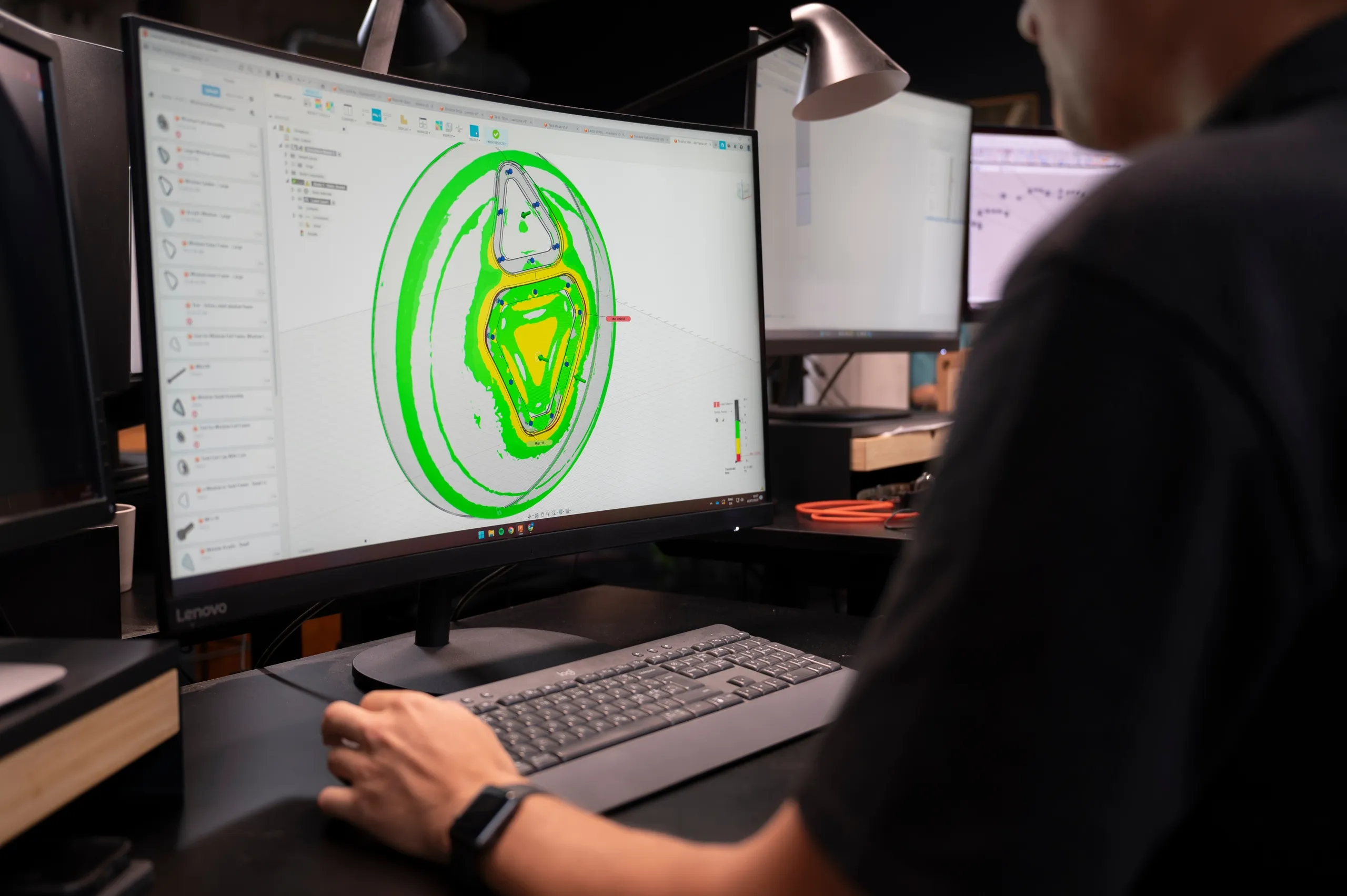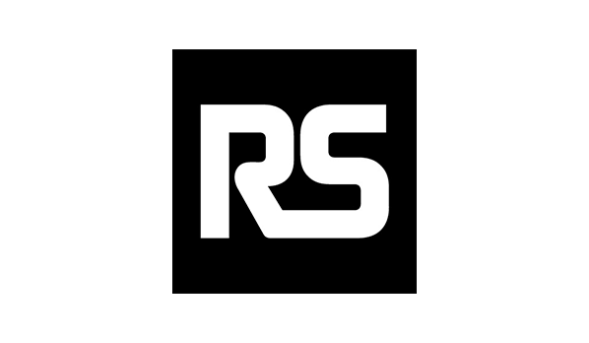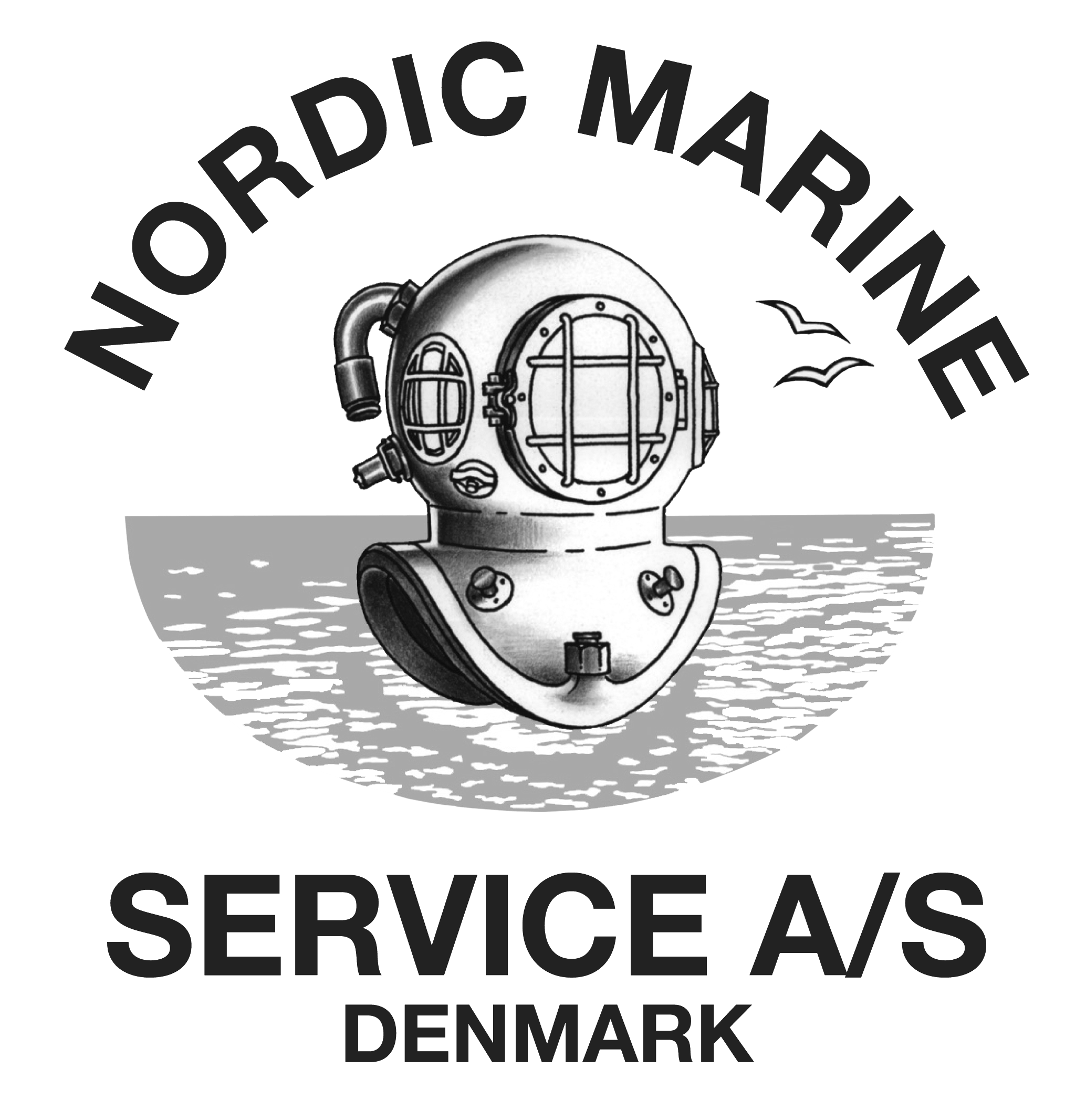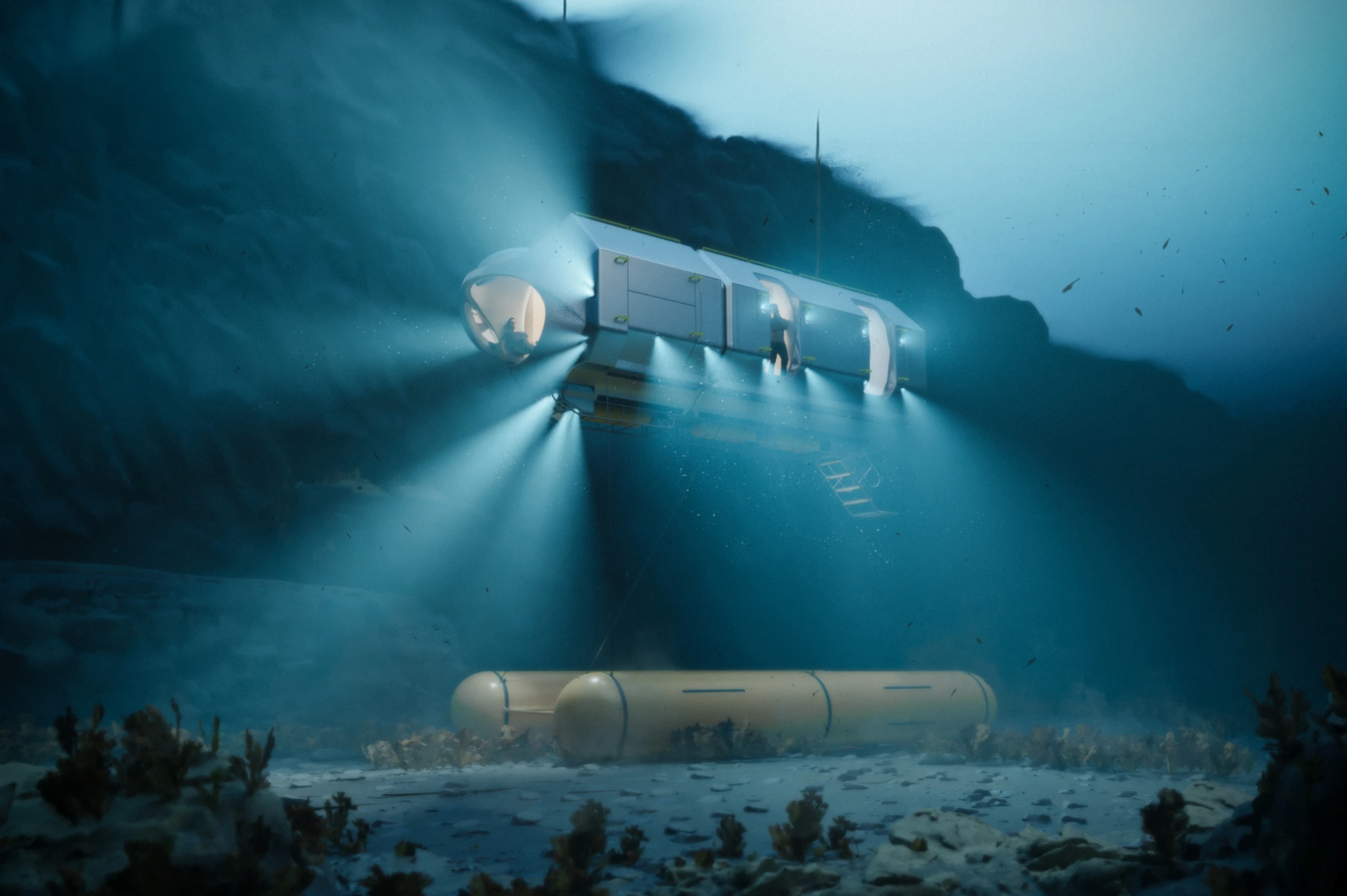
Since the dawn of space travel, astronauts have trained underwater
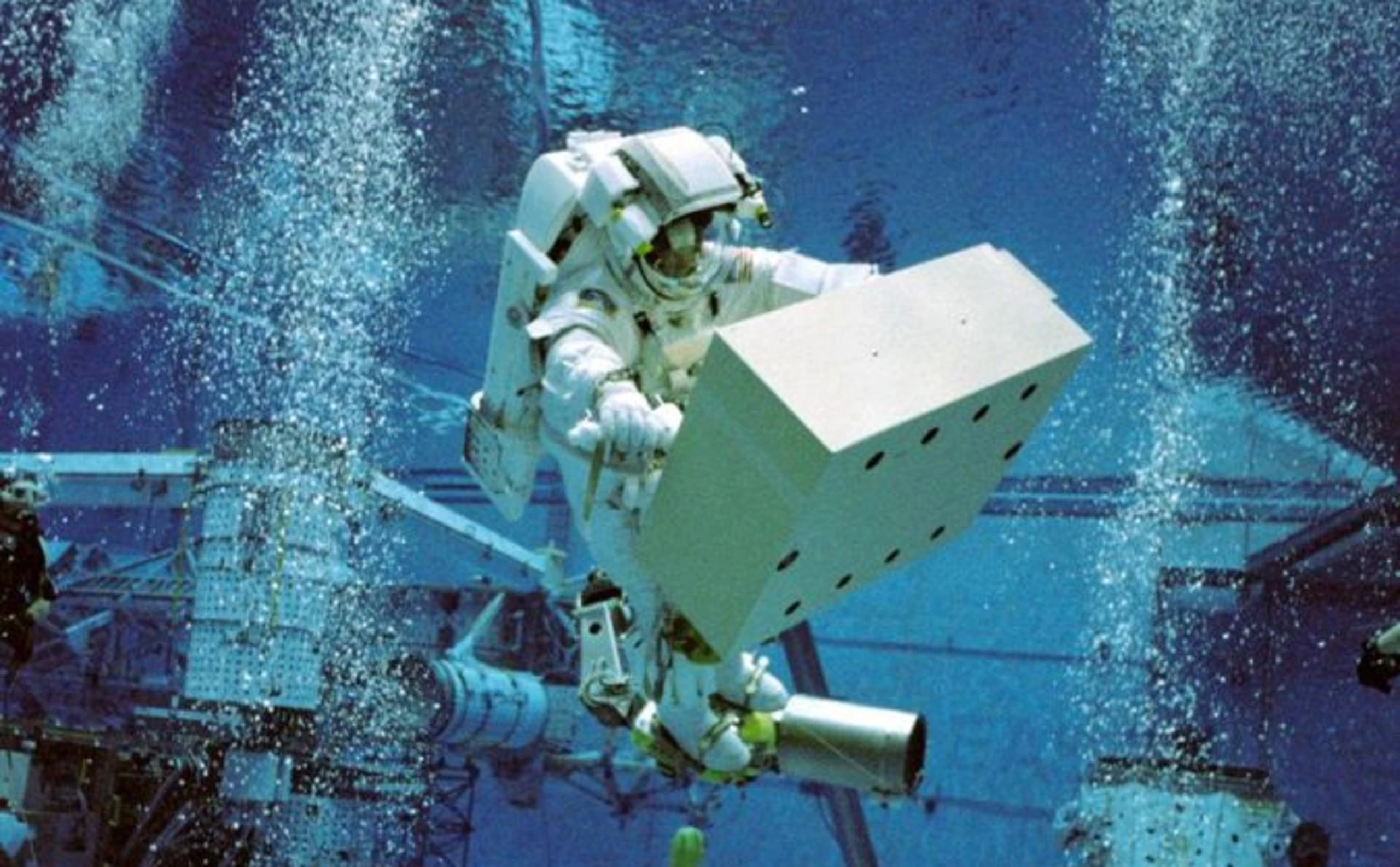
This decade we will reach the Moon & Mars
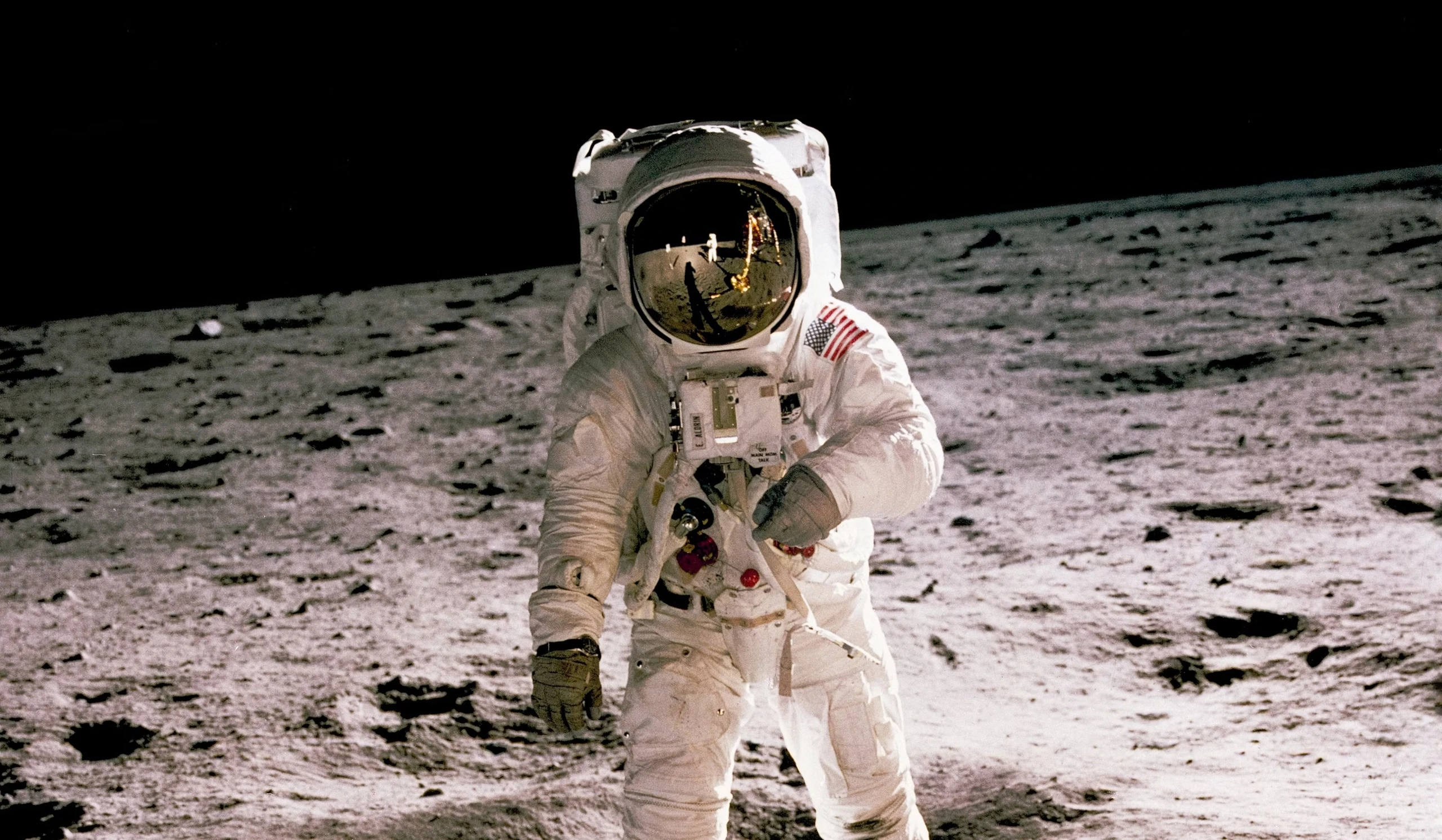
UHAB will prepare this generation of astronauts
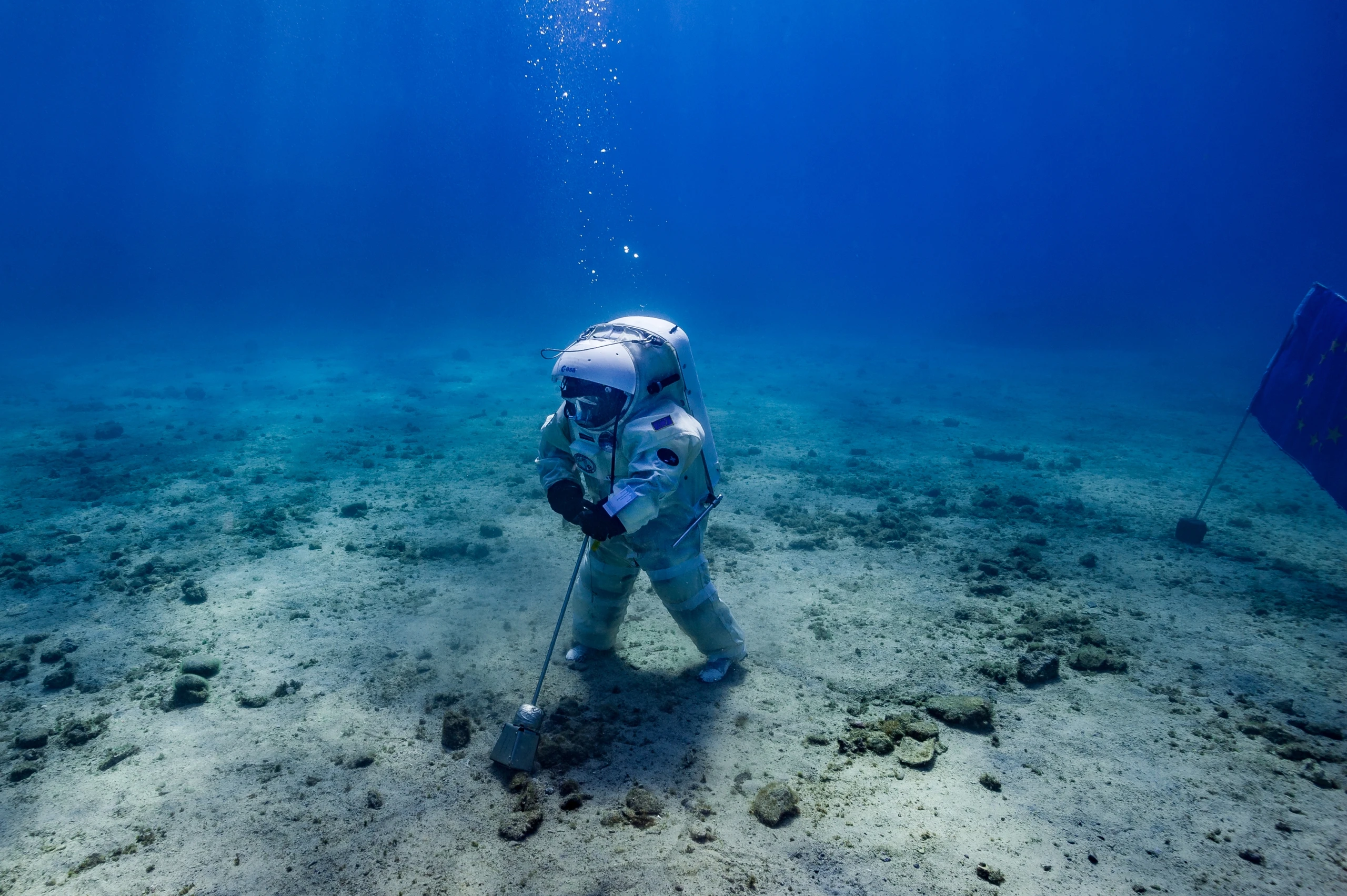
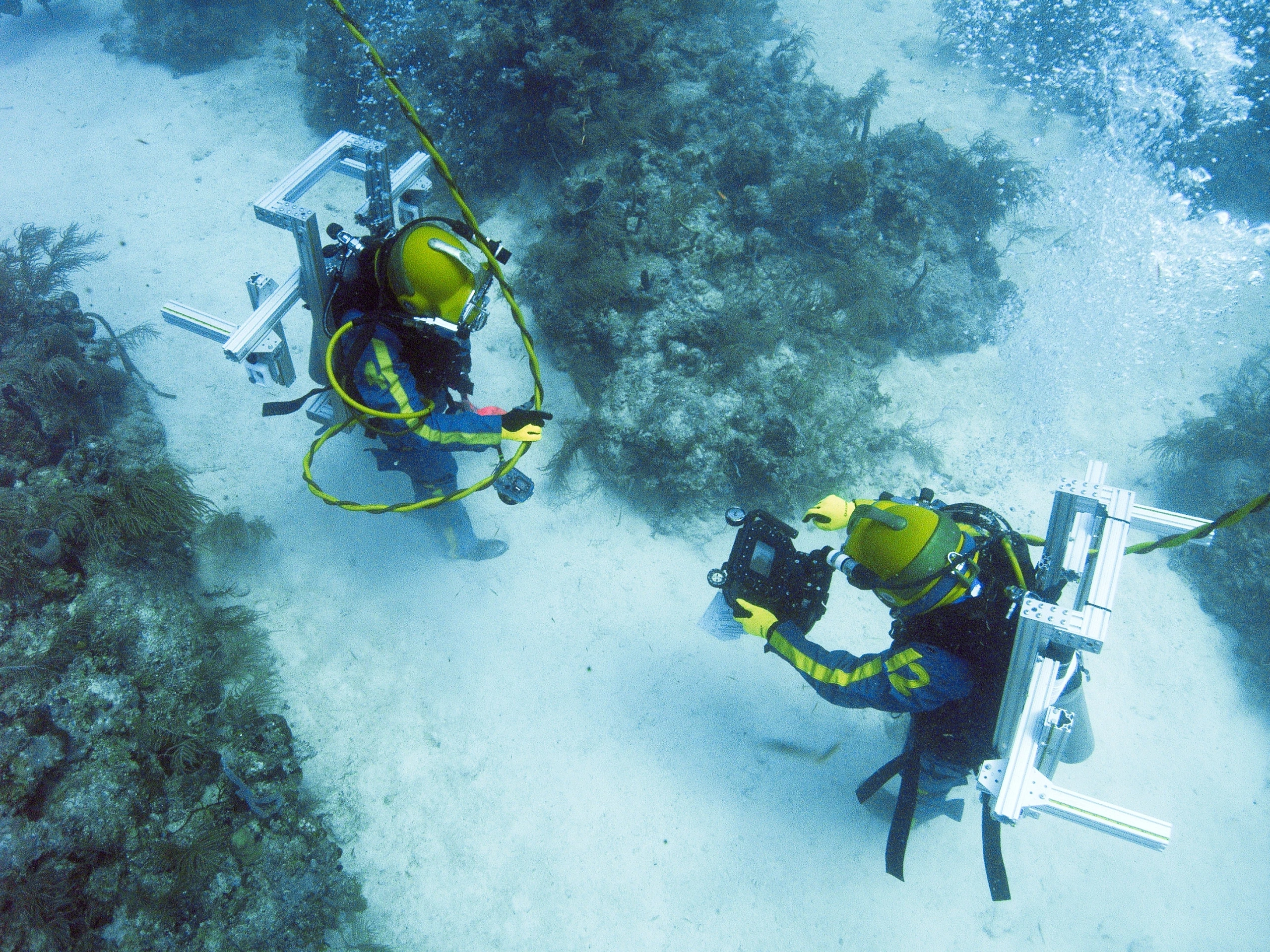
On the seabed
Located directly on the seabed, UHAB-3 enables unique risk management training for astronauts, mirroring the challenges in space. It also significantly enhances marine research by extending bottom time for scientists without the need for daily decompression, providing insights into environmental preservation and climate change. Its mobility allows for strategic placement, and optimizing research opportunities.
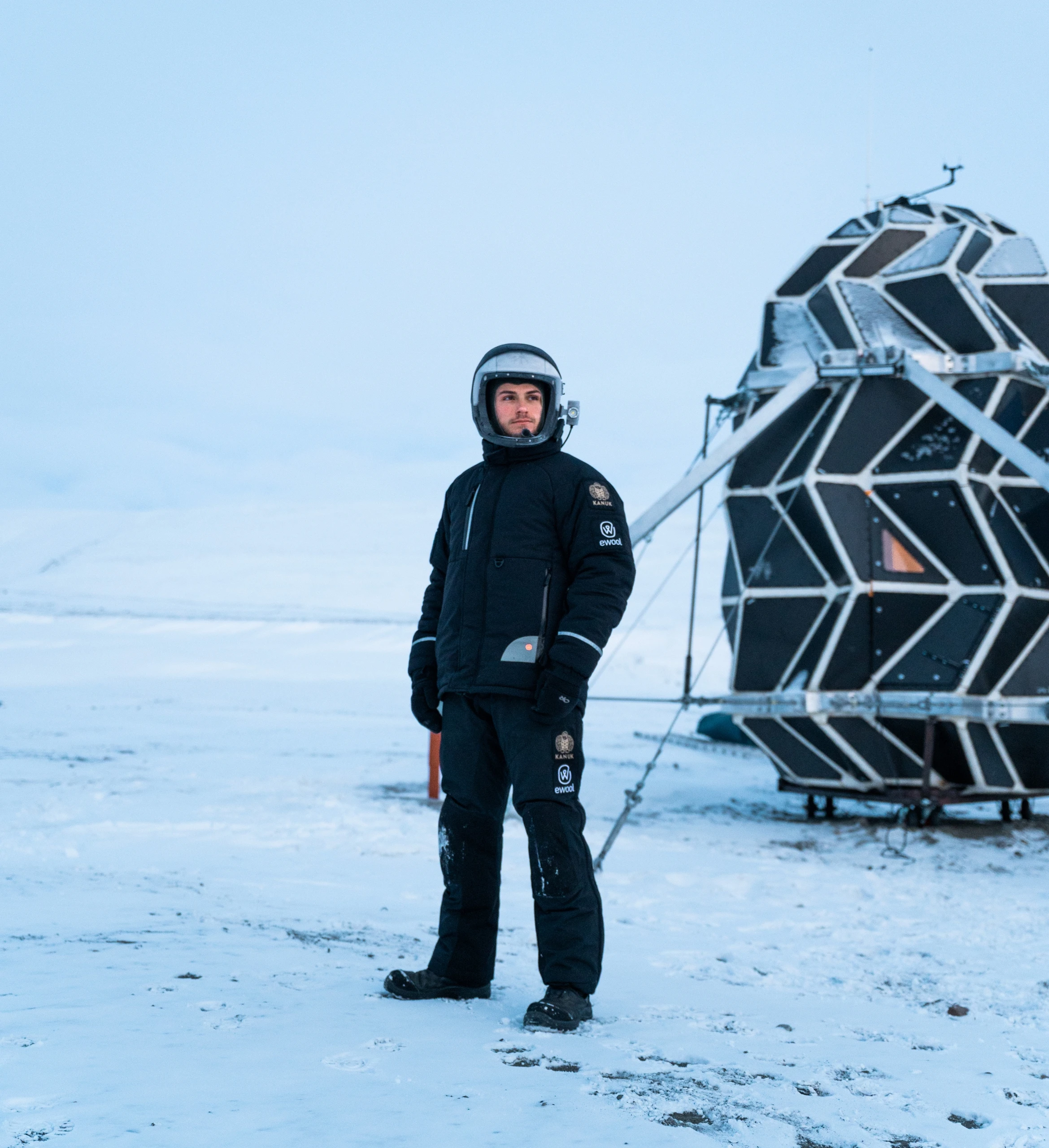
Unique insights
& Experience
Drawing on Sebastian Aristotelis' invaluable experiences, including a 48-hour underwater stay in UHAB-1 and a 100-day expedition in Northern Greenland with the LUNARK habitat. Under the leadership of Sebastian, SAGA has constructed four advanced space habitats in the harshest remote climates on Earth, and recently sent a payload to space on the International Space Station
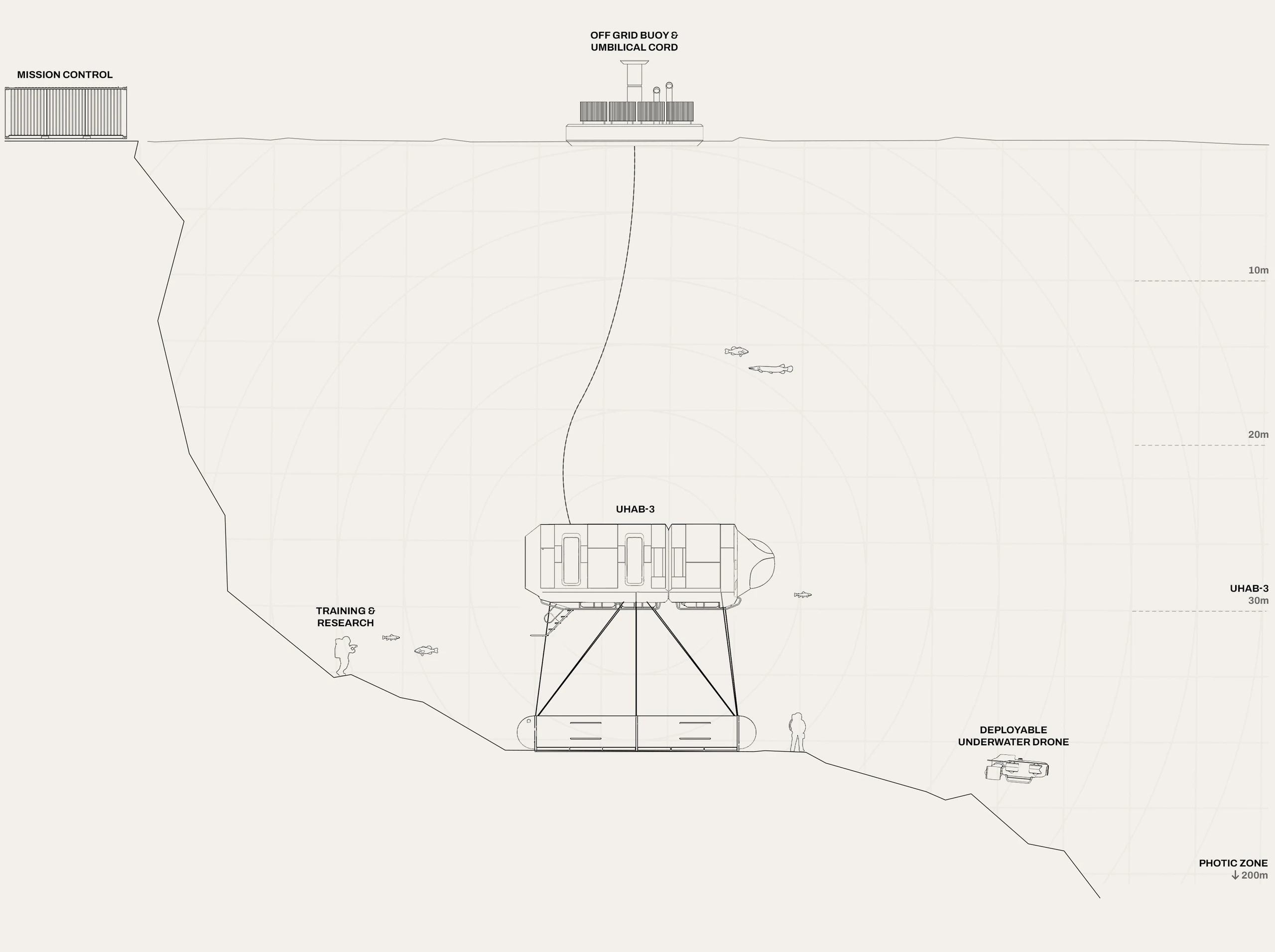
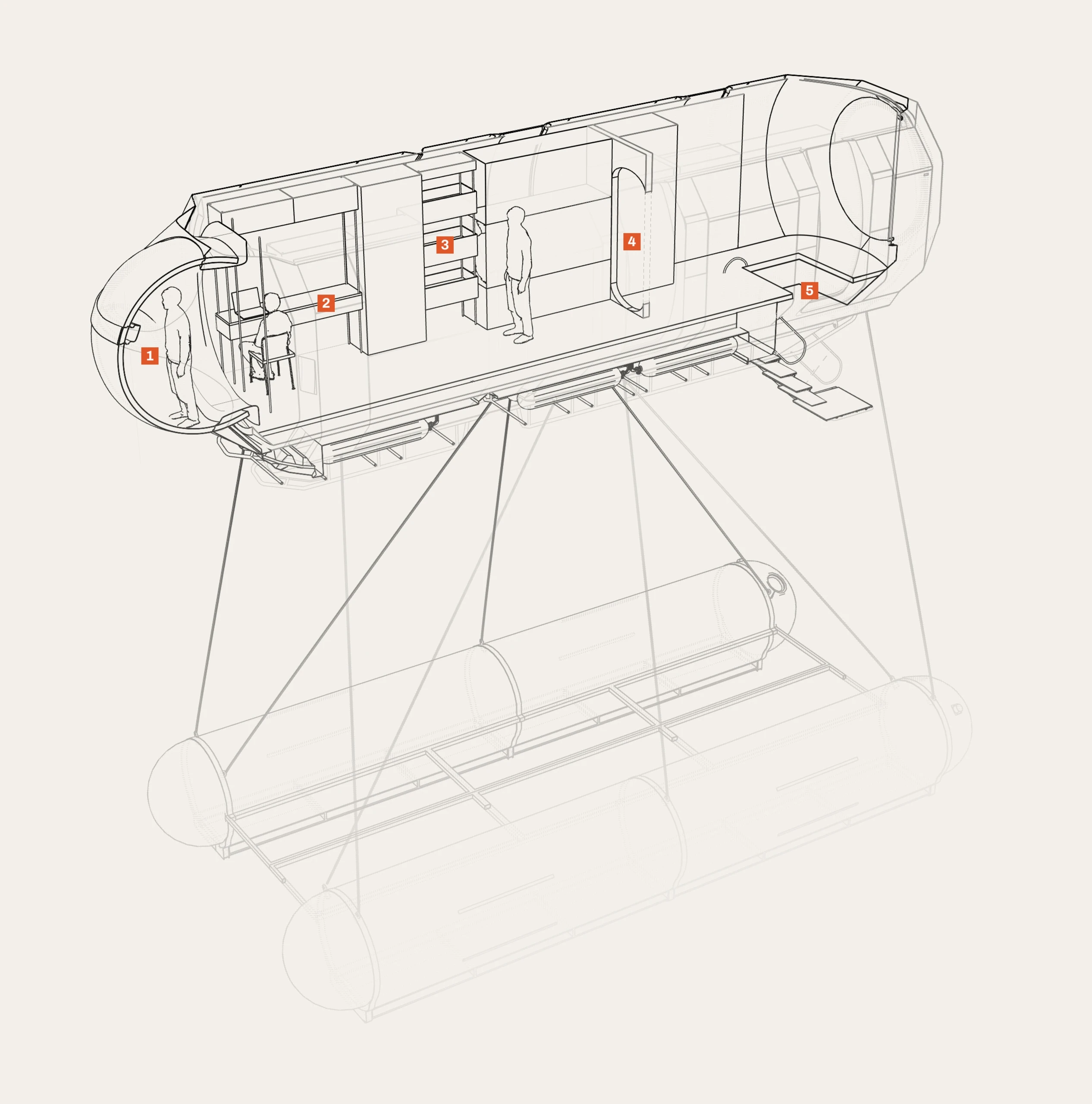
Introducing UHAB-3
A next-generation human habitat designed for the new space era, leveraging breakthroughs in digital fabrication, artificial intelligence, and sensor technology to create a healthy living space in extreme environments
- 1. 270 degree viewing dome
- 2. Workstation
- 3. Vertical farm
- 4. Decompression door
- 5. Moon pool
Habitat Features

Autonomous operation
By integrating sensors throughout the habitat and its hull, alongside predictive maintenance and off-grid renewable energy, operations become more autonomous. This reduces the need for a large support crew and lowers operational costs.
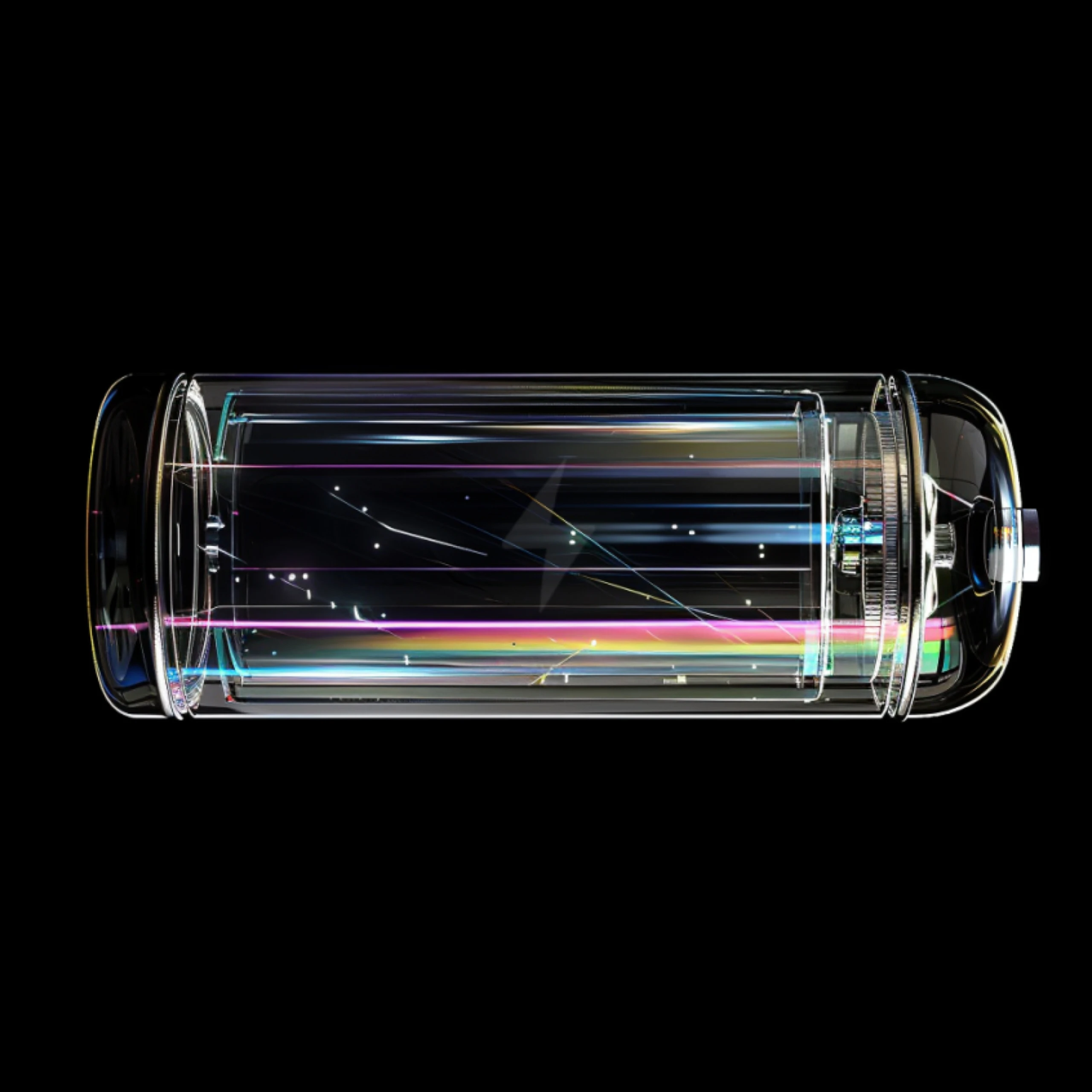
Off-Grid Capability
Powered by a solar buoy with a renewable energy system, UHAB-03 boasts extensive operational autonomy, ensuring sustained research and living conditions.
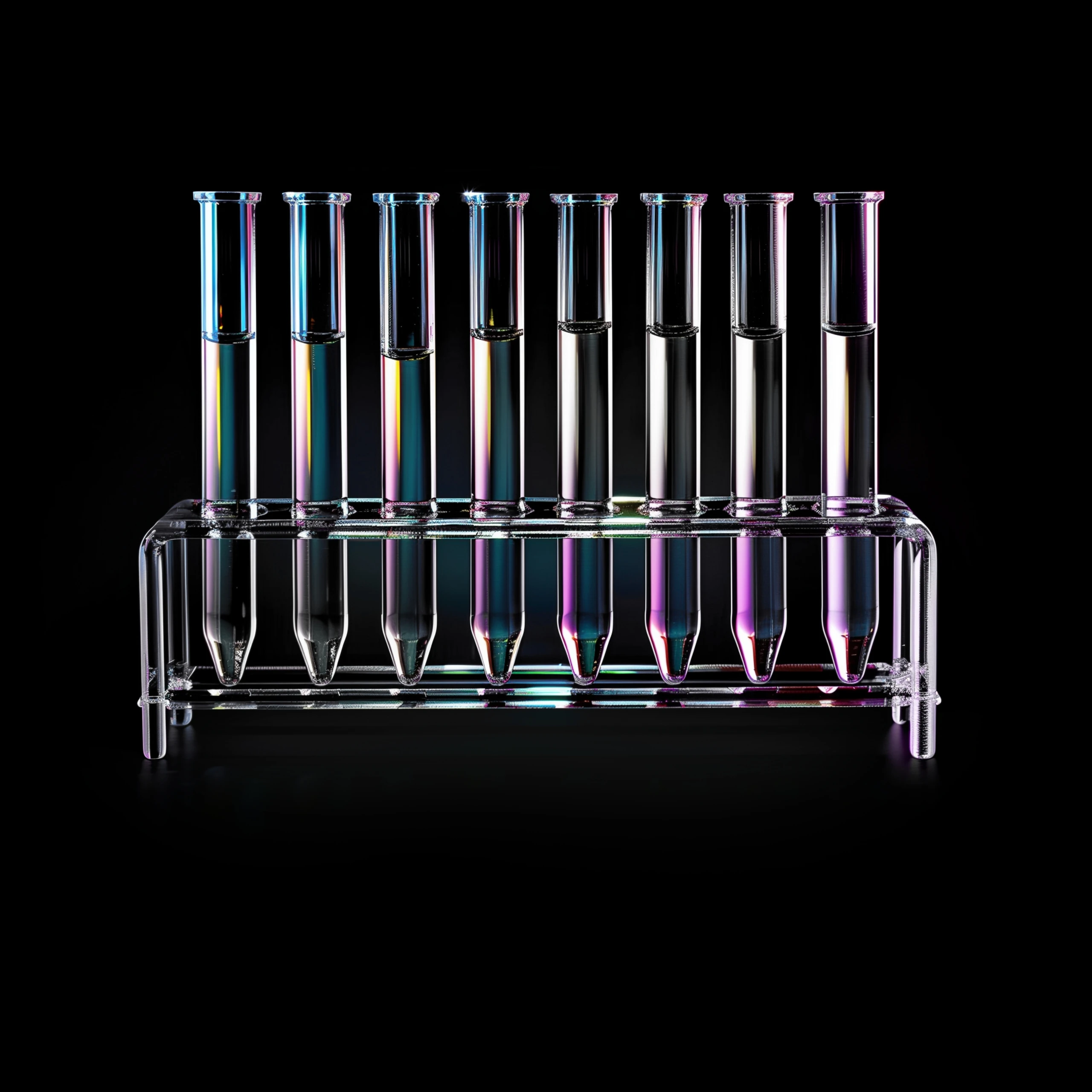
Advanced Laboratory
Equipped with a compact state-of-the-art underwater science lab, UHAB-3 supports comprehensive research. The habitat also features extensive broadcasting capabilities for global collaboration.
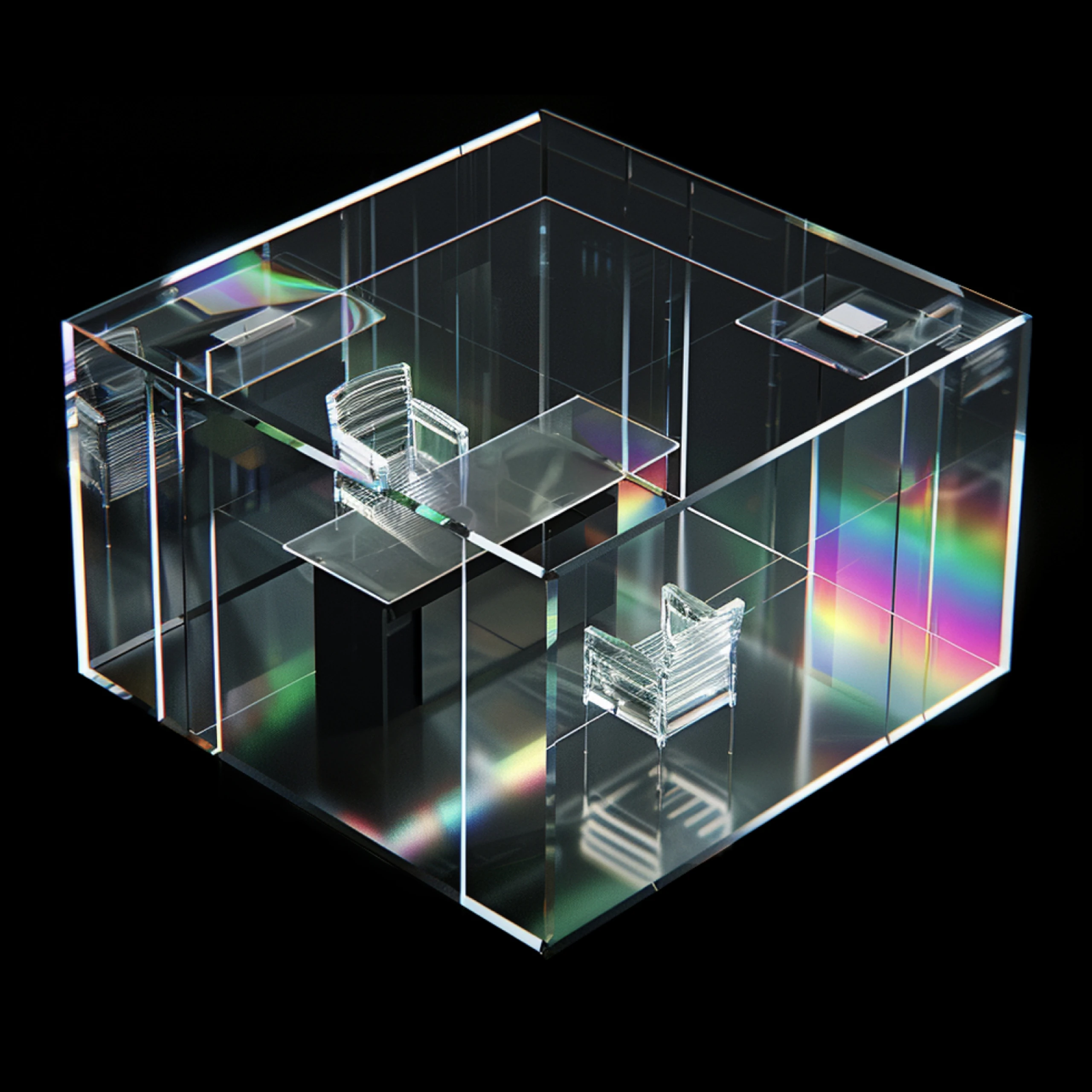
Stimulating Interior Design
The habitat's dynamic interior includes multifunctional furniture, a shower, and private sleeping areas, enhanced with personalized lighting and thermal systems for ultimate comfort in cold waters.
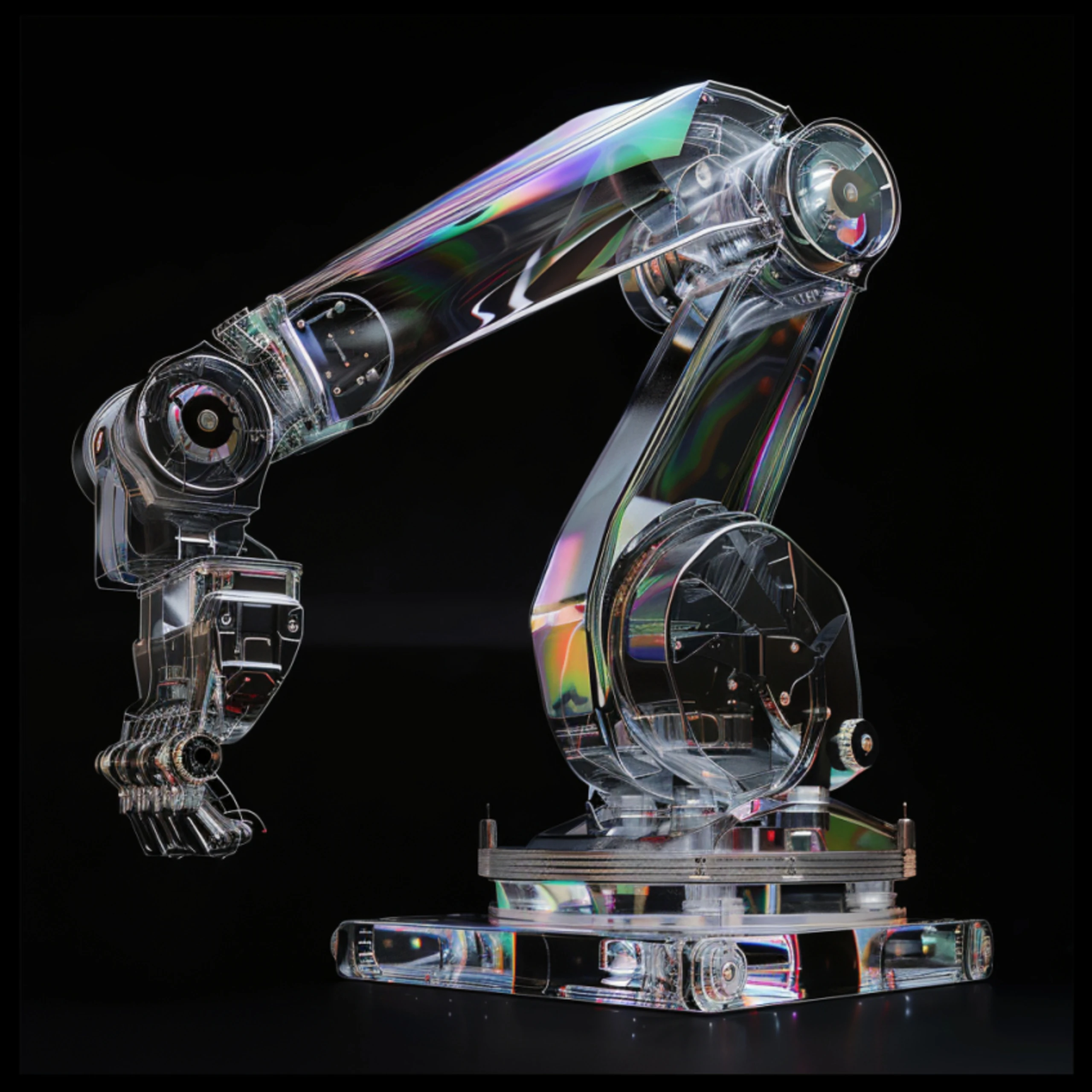
Digital Fabrication
UHAB-3 incorporates large 3D-printed metal components, realized through collaboration with MX3D, to achieve structurally optimized shapes. The interior, predominantly crafted from 3D-printed composite polymers, is ingeniously designed to expand living space efficiently.
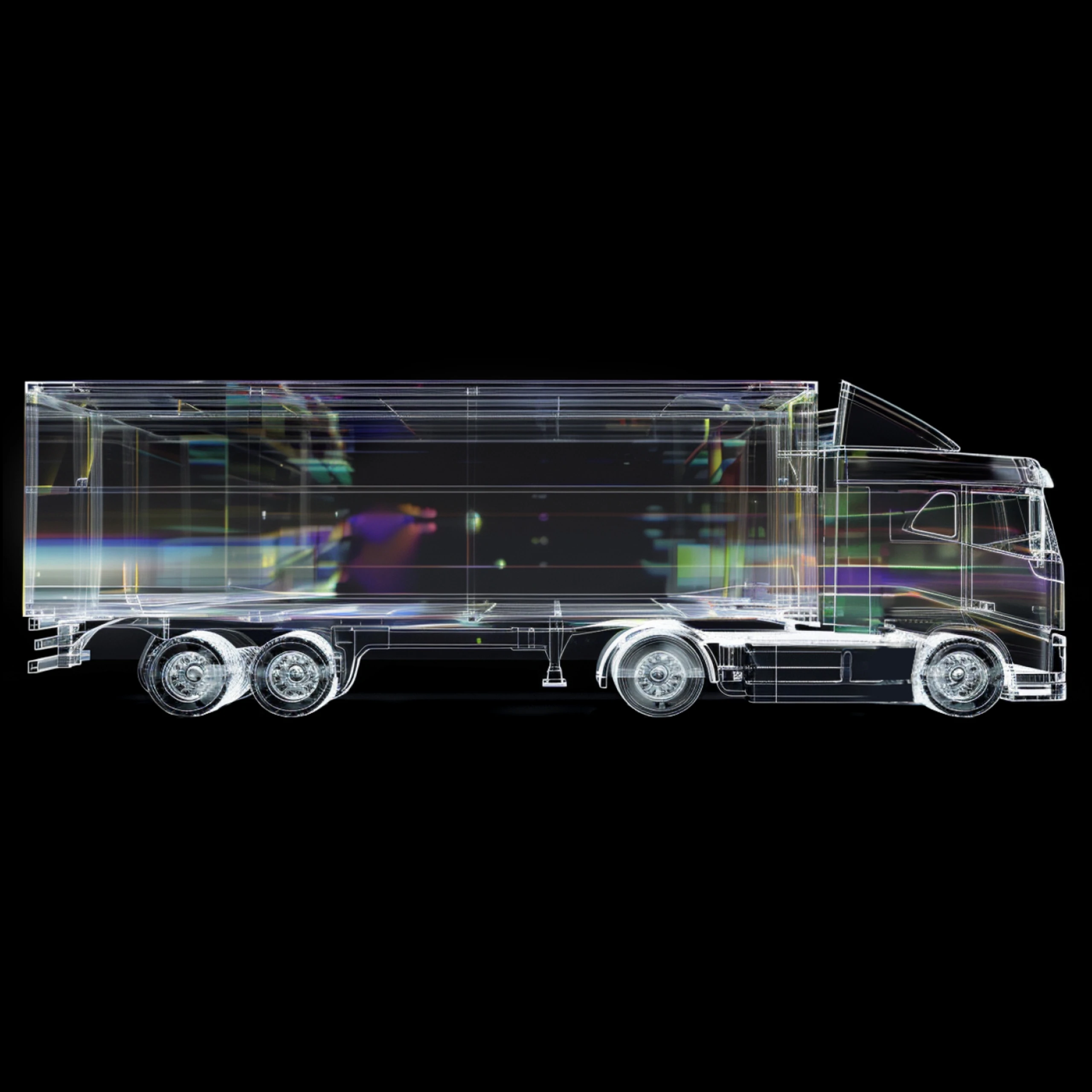
Mobility
UHAB-3 is engineered for mobility, designed to be easily deployed and operate in a variety of settings. Its compact and flexible structure facilitates easy transportation and deployment.
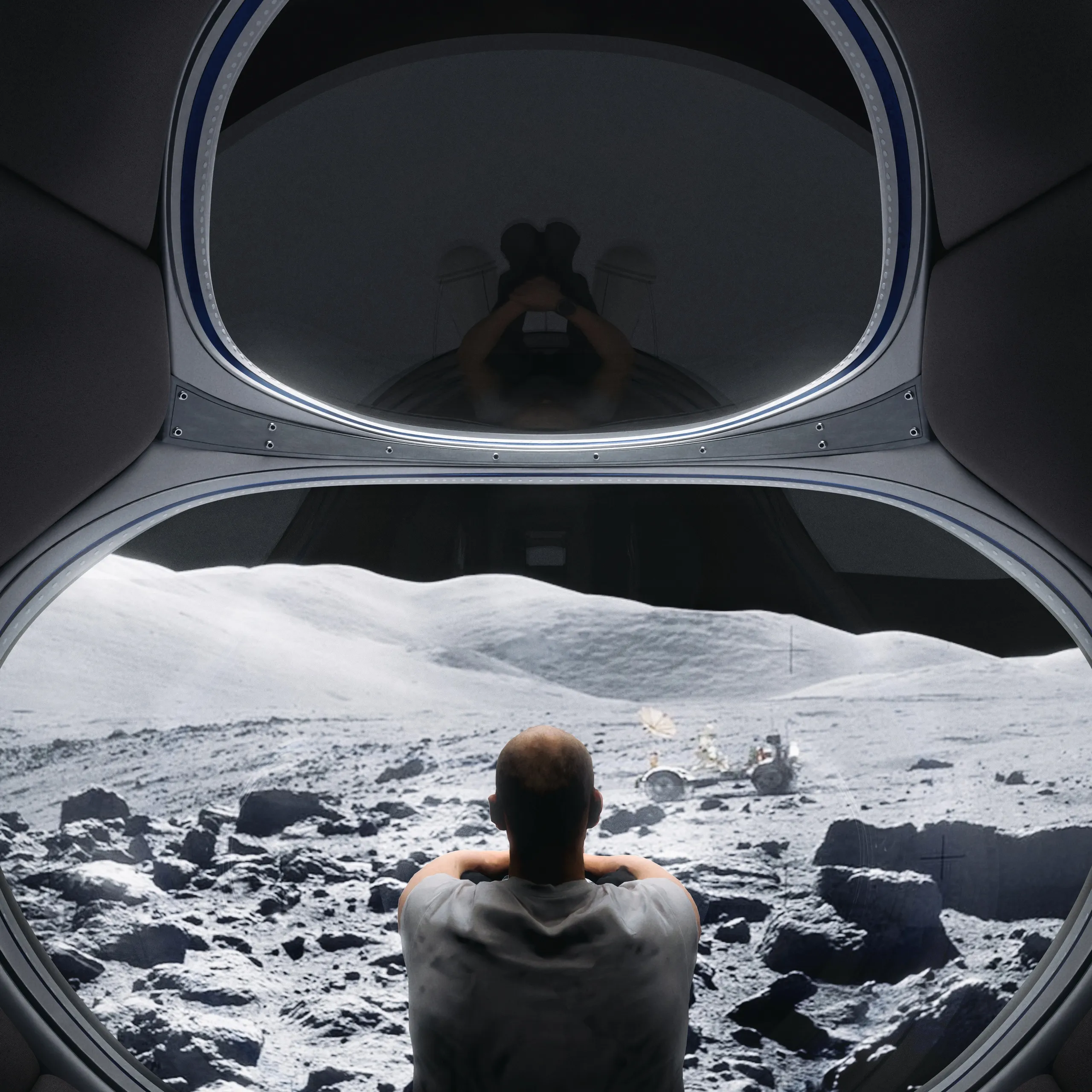
We are building the next generation lunar habitat
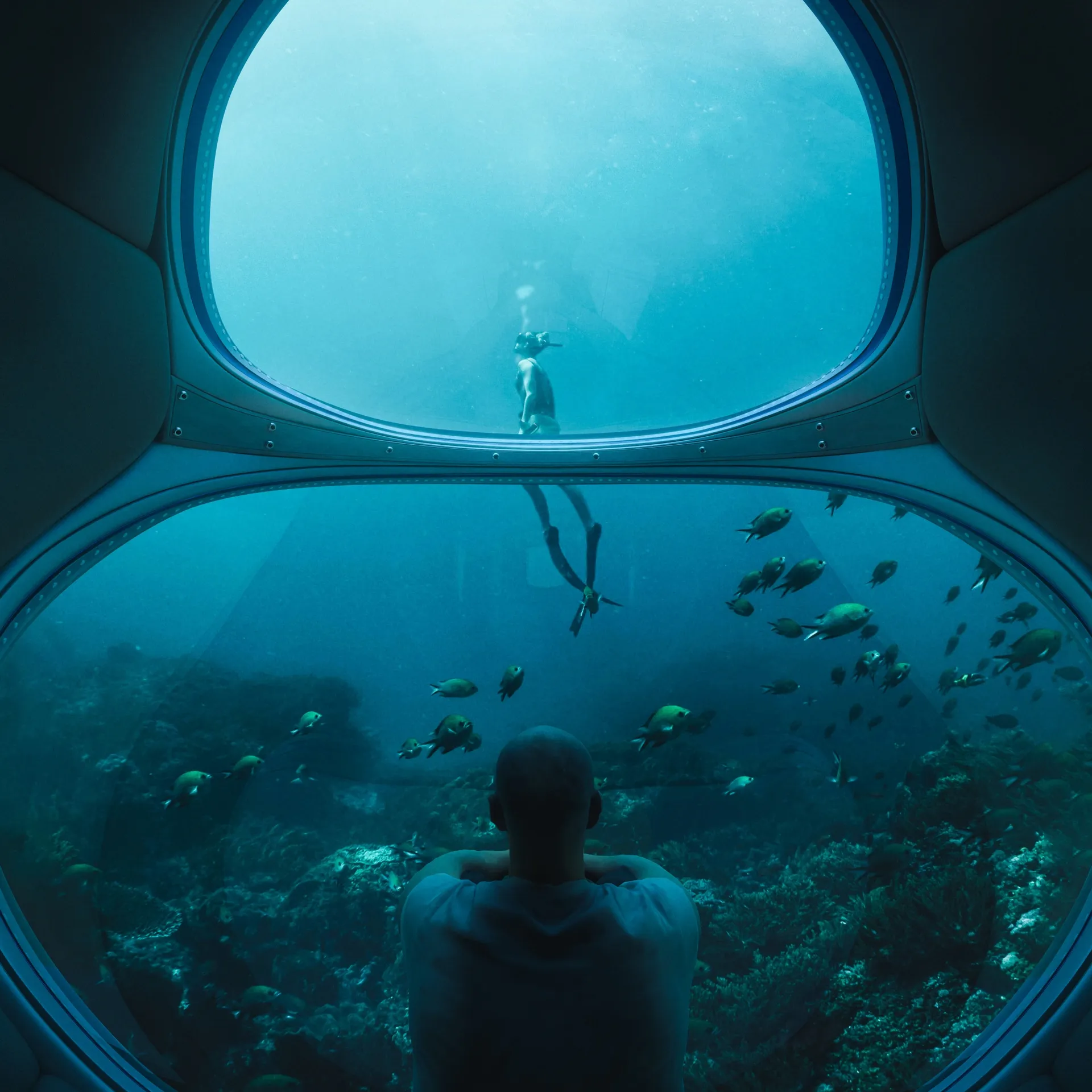
To train the future of astronauts & scientists
Real world data
UHAB-3 is set to be deployed at key underwater locations, serving dual roles in marine research and astronaut training.
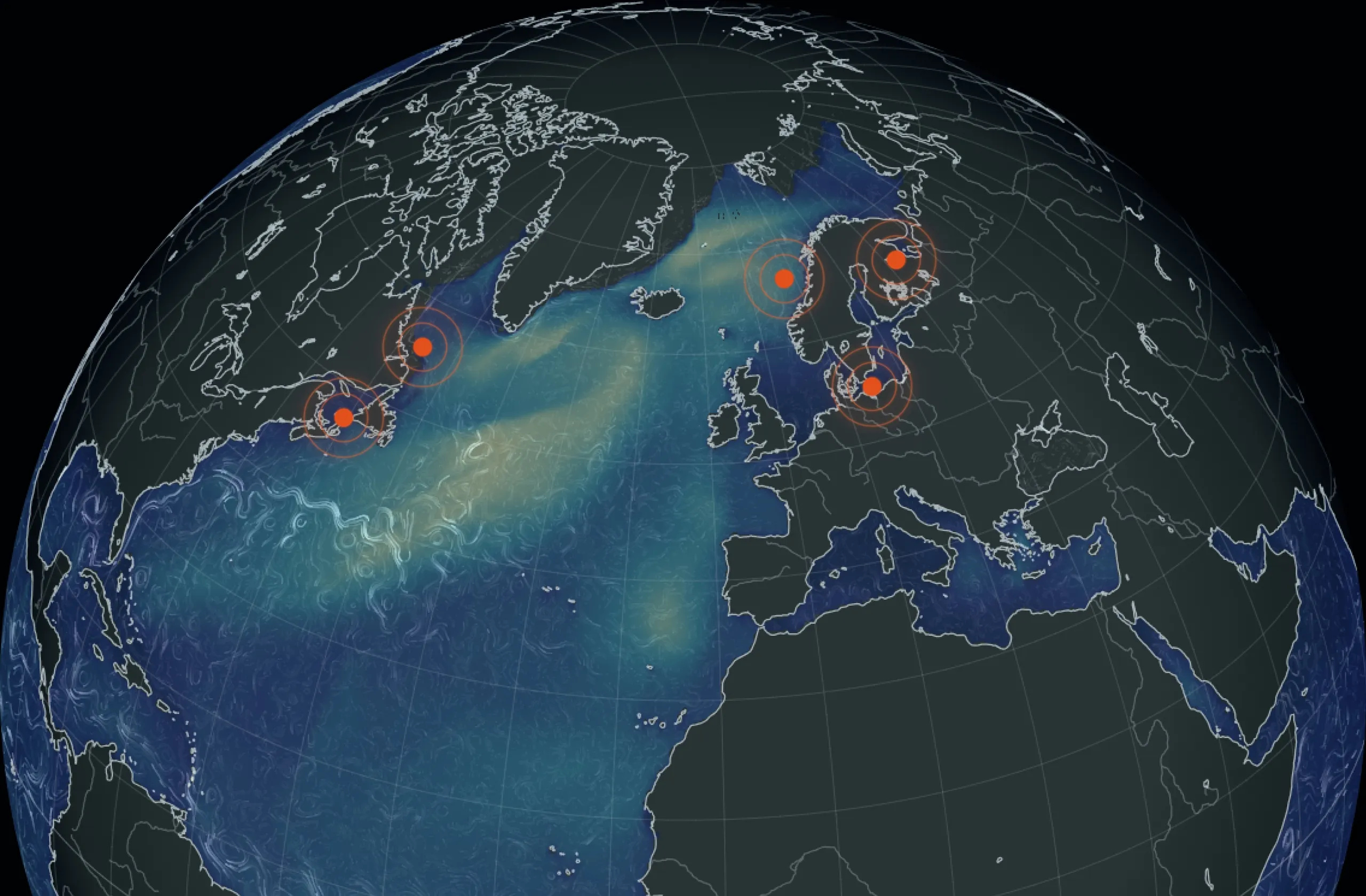
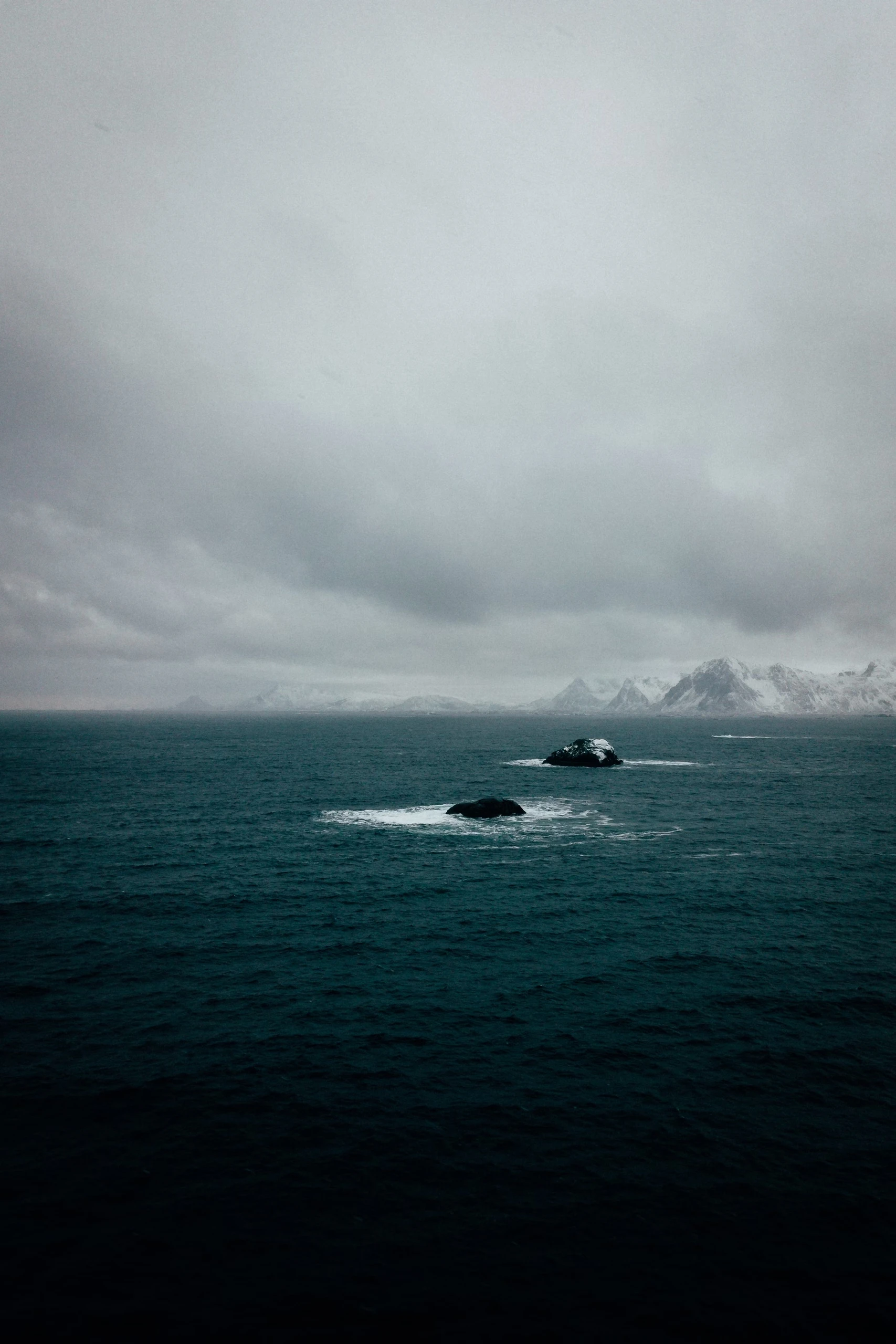
Real World Data
UHAB-3 is set to be deployed at key underwater locations, serving dual roles in marine research and astronaut training.

Arctic Endurance
Engineered for resilience, UHAB-3 is tailored to thrive in Earth's coldest waters, enabling critical research in the most frigid environments.
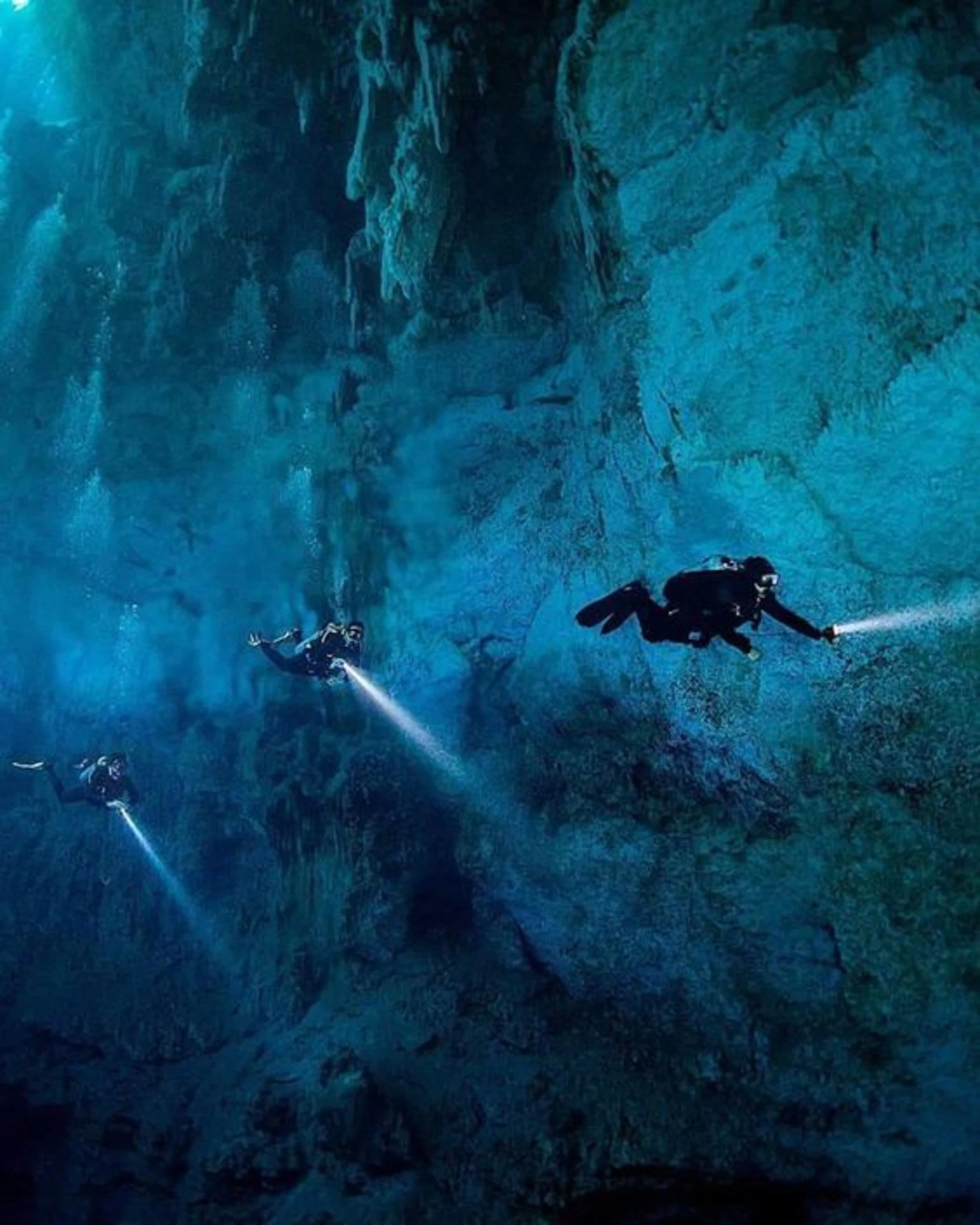
Frontiers of Climate Study
Embedded in changing ecosystems, UHAB-3 is at the forefront of studying the impacts of climate variability underwater.
Why underwater for space training?
What do the bottom of a blue ocean and the surface of a Red Planet have in common? Both are extreme and dangerous environments and cause real stress. To thrive and not just survive in these environments, well-being and indoor climate plays a crucial role in our architecture.

Roadmap
How we are getting there and when.
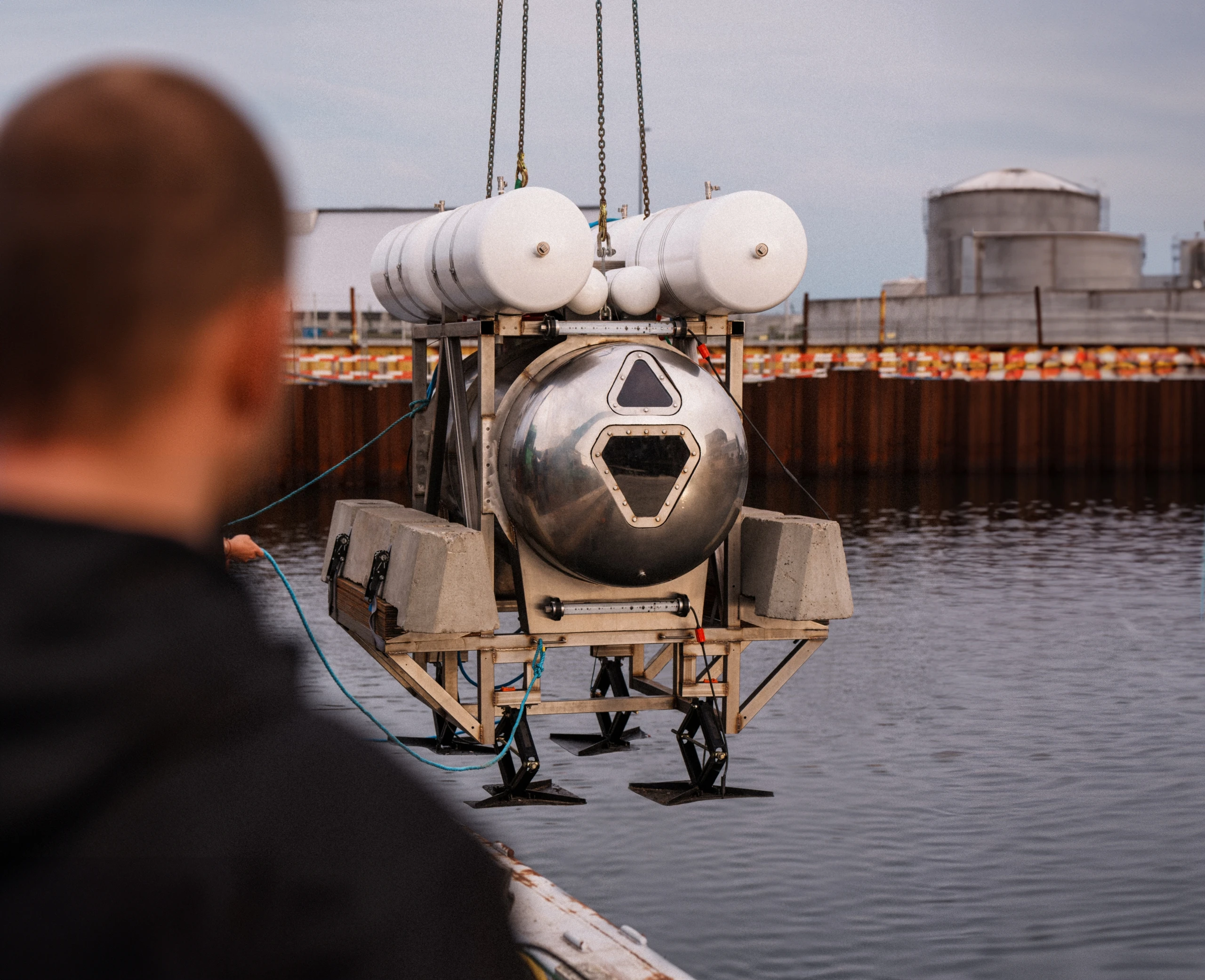
UHAB-1: PILOT HABITAT
UHAB-1 marked the completion of our initial phase by constructing and successfully testing the smallest functional underwater habitat. It underwent a 48-hour trial at a 7-meter depth in Copenhagen Harbour in 2023, where its life support and environmental control systems were effectively validated. This project, in collaboration with MIT and SDU, has been thoroughly documented in a study and white paper available for further reading.
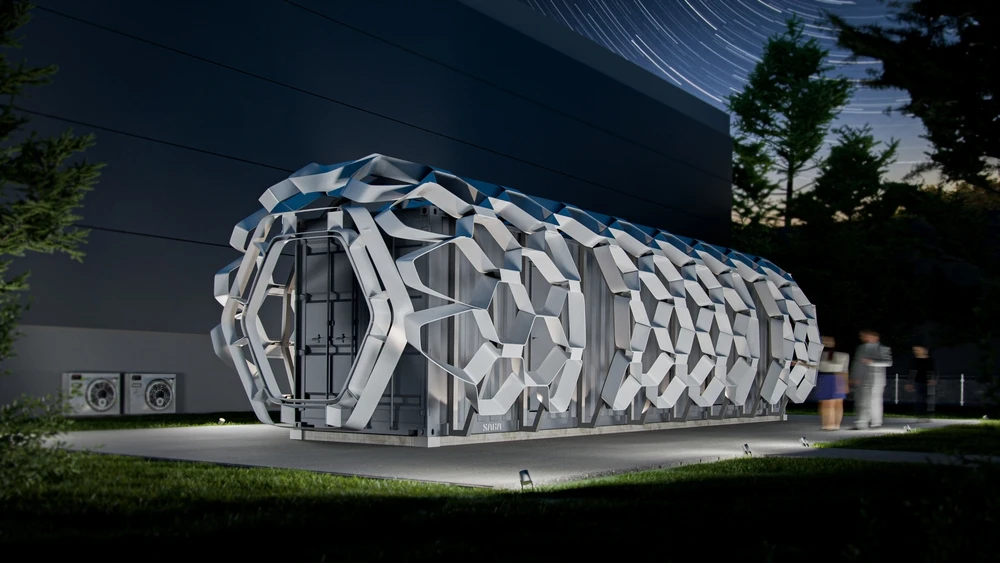
UHAB-2: HIGH FIDELITY MOCKUP
We're creating a high fidelity mockup of the final habitat on land, engaging in a comprehensive 20-day validation mission with a four-person crew. This phase includes extensive psychological and physiological evaluations, conducted in partnership with MIT, as well as ergonomic and architectural studies. UHAB-2 also serves as the FLEXHab habitat for the European Astronaut Centre (EAC) in Cologne.
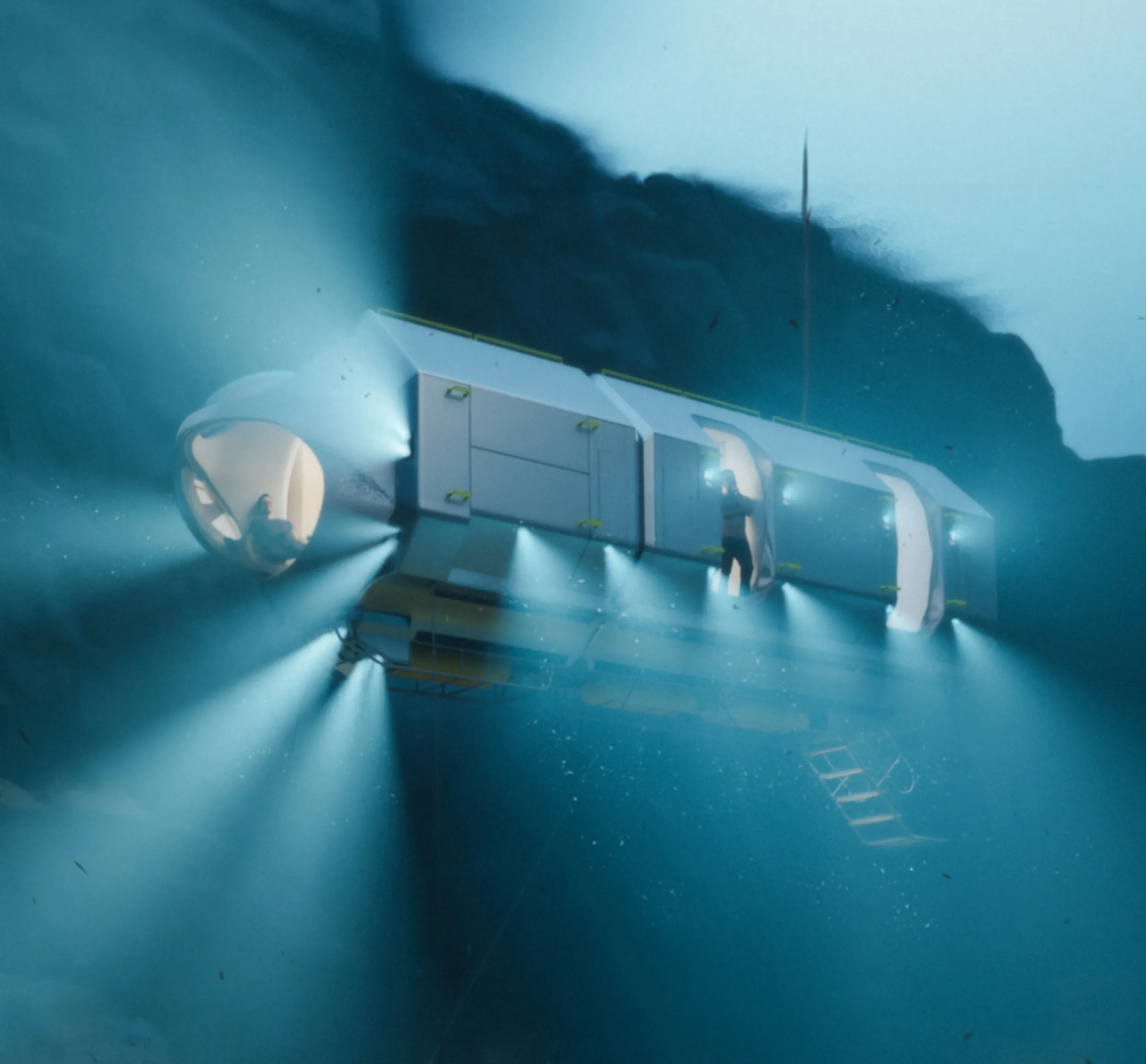
UHAB-3: OPERATIONAL HABITAT
By 2027, UHAB-3 will be a fully operational habitat designed for four-member crews, complete with a mission control unit. It's set for an inaugural long-duration mission in some of the Earth's coldest oceans, marking a significant milestone in underwater living and research capabilities.
UHAB-2 Status
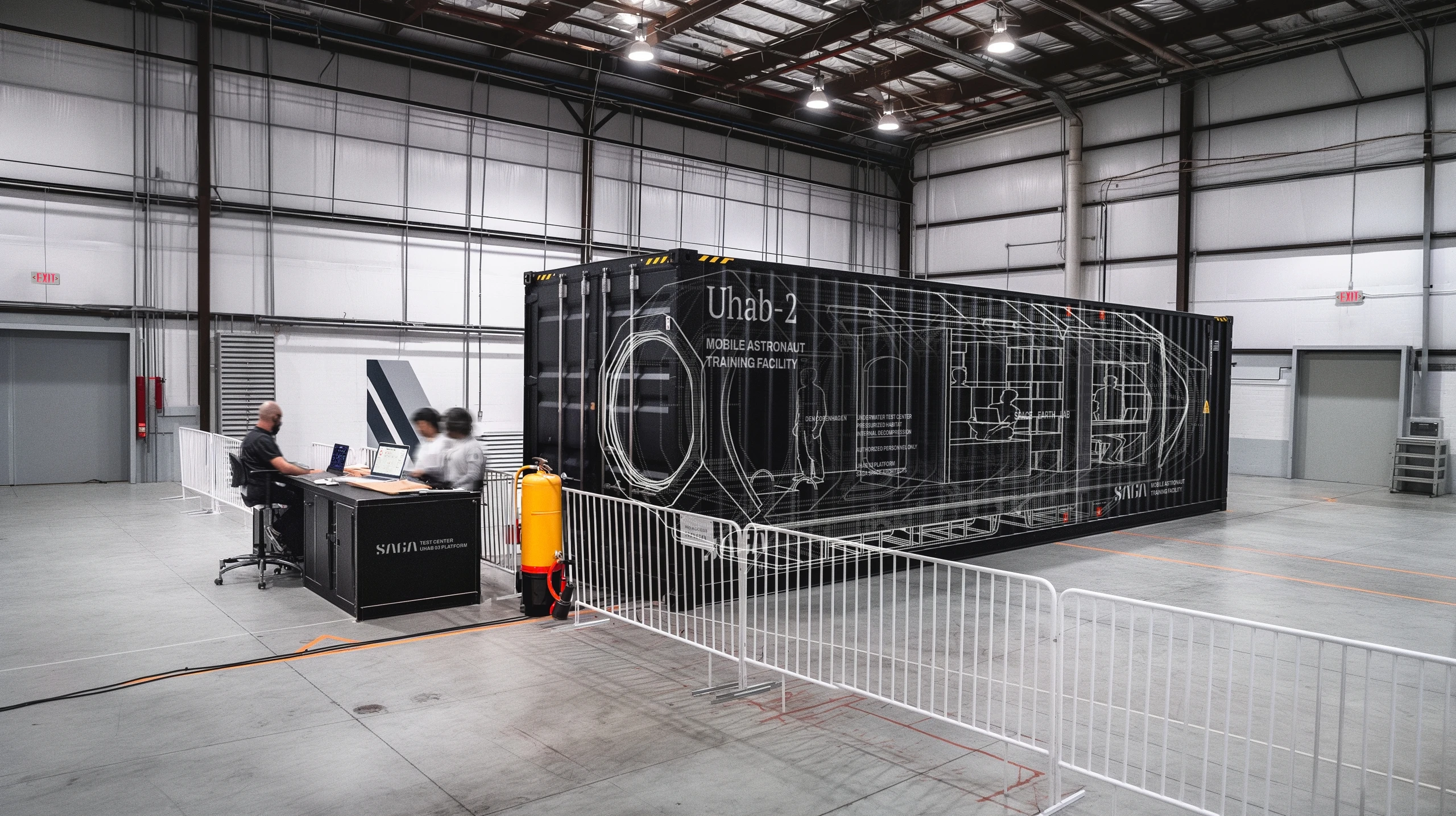
Designed, built,
tested in-house
The entire habitat, from the first idea to the final bolt, has been designed and built in our studio and workshop in Copenhagen.
We've done it before
For six years, we've been designing, constructing, and testing habitats and hardware tailored for the most extreme environments on Earth and in space.
Research
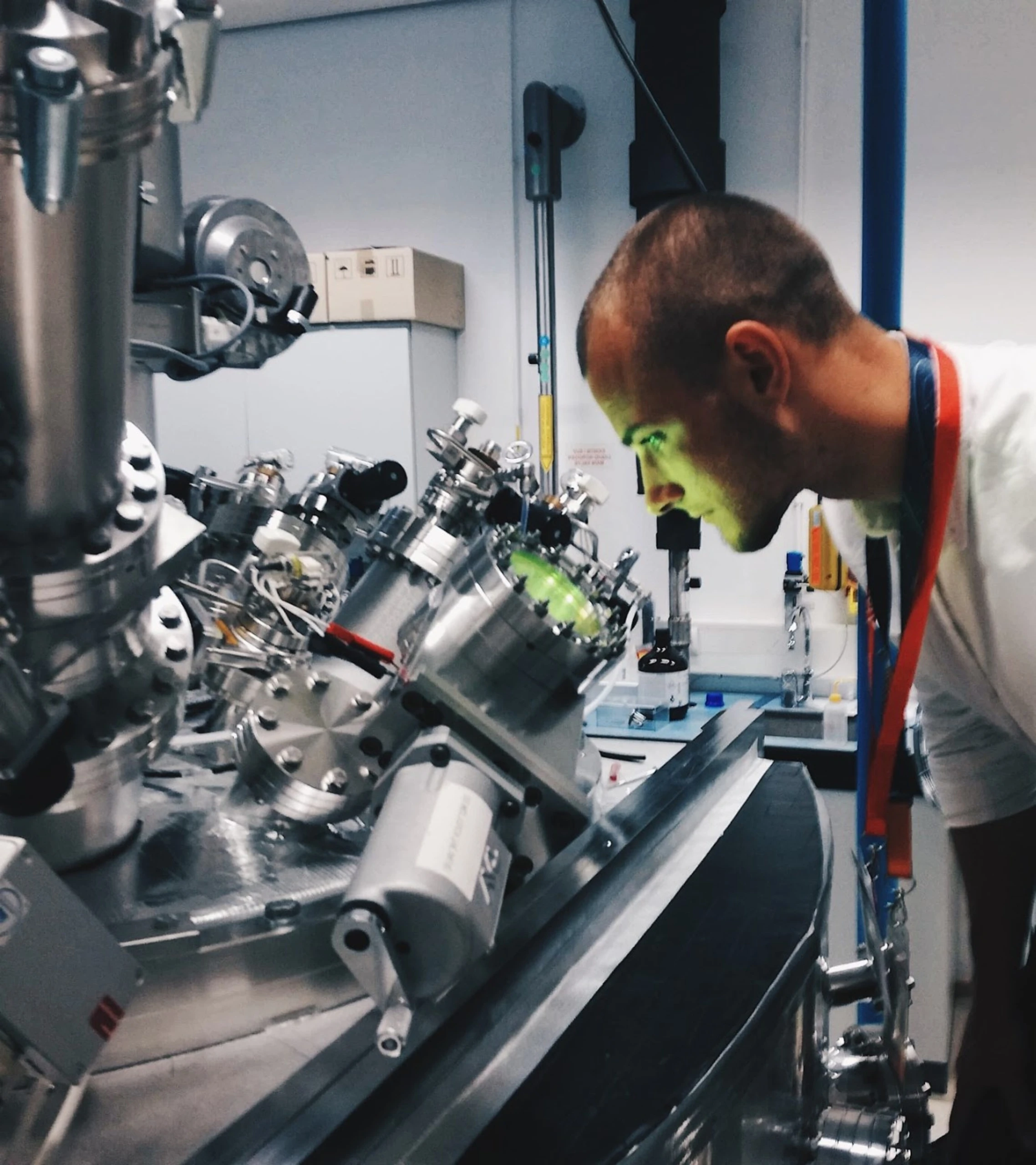
RESEARCH OPPORTUNITIES
UHAB-3 combines a marine laboratory and a manned exploration platform, offering space researchers a practical setting for technology and procedure trials. It features a versatile payload rack for plug-and-play experiments, catering to various power needs and ethernet connectivity. An open call will soon invite academia and industry to contribute experiments. Payload examples are: on space exploration, controlled environment horticulture, or additive manufacturing, with selections based on scientific merit and relevance. Participants are tasked with developing and transporting their payloads to Copenhagen, while SAGA oversees installation and operations.
